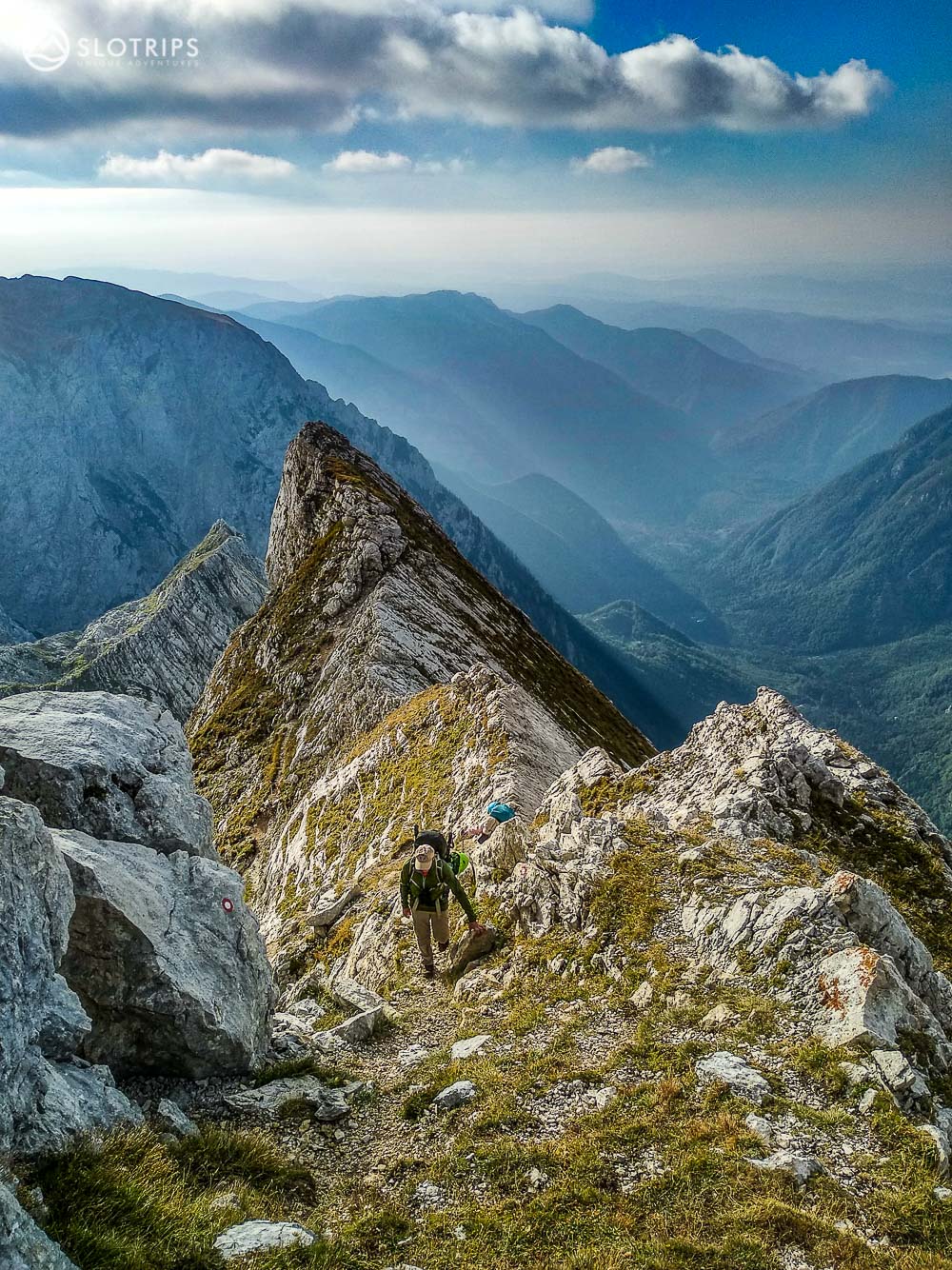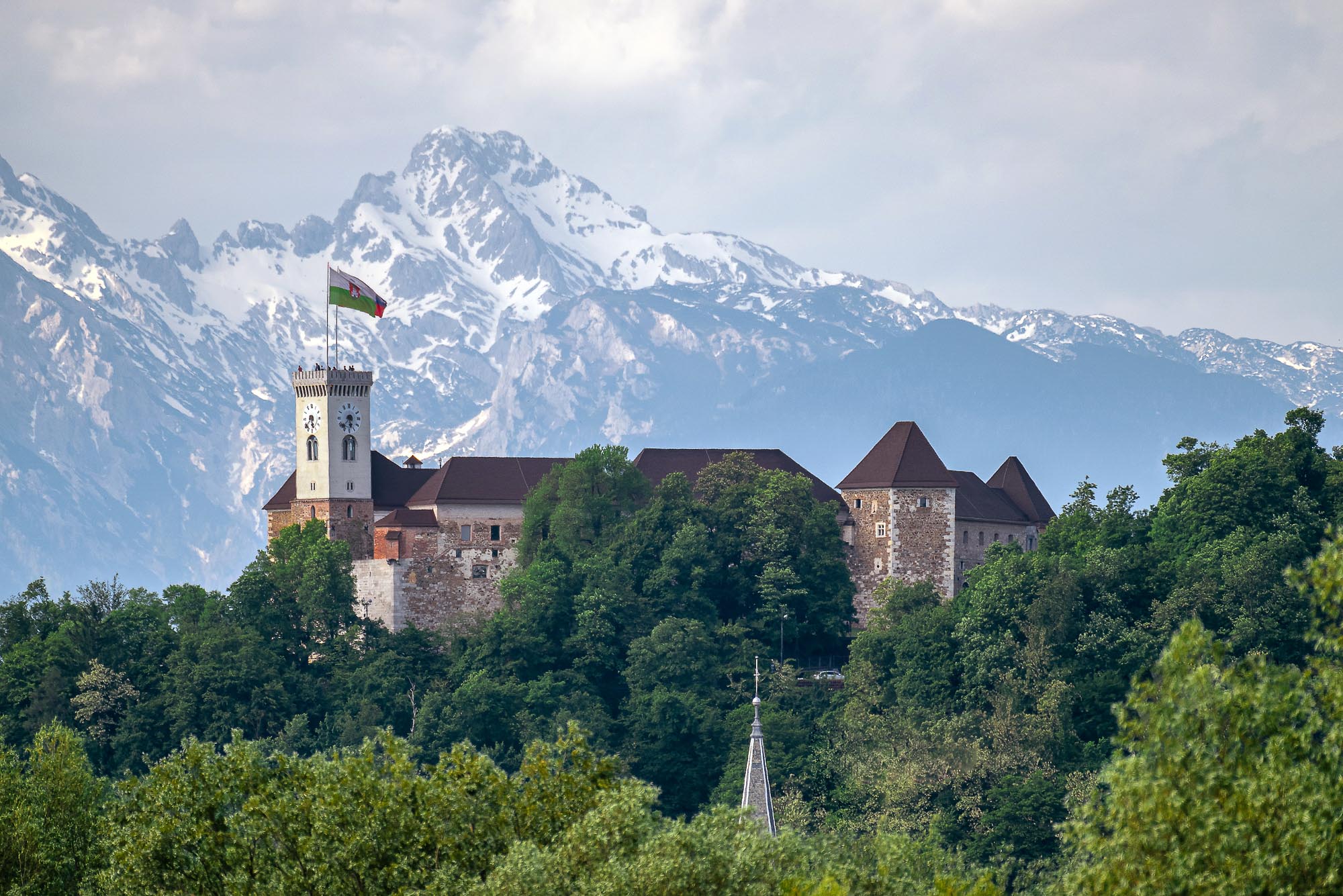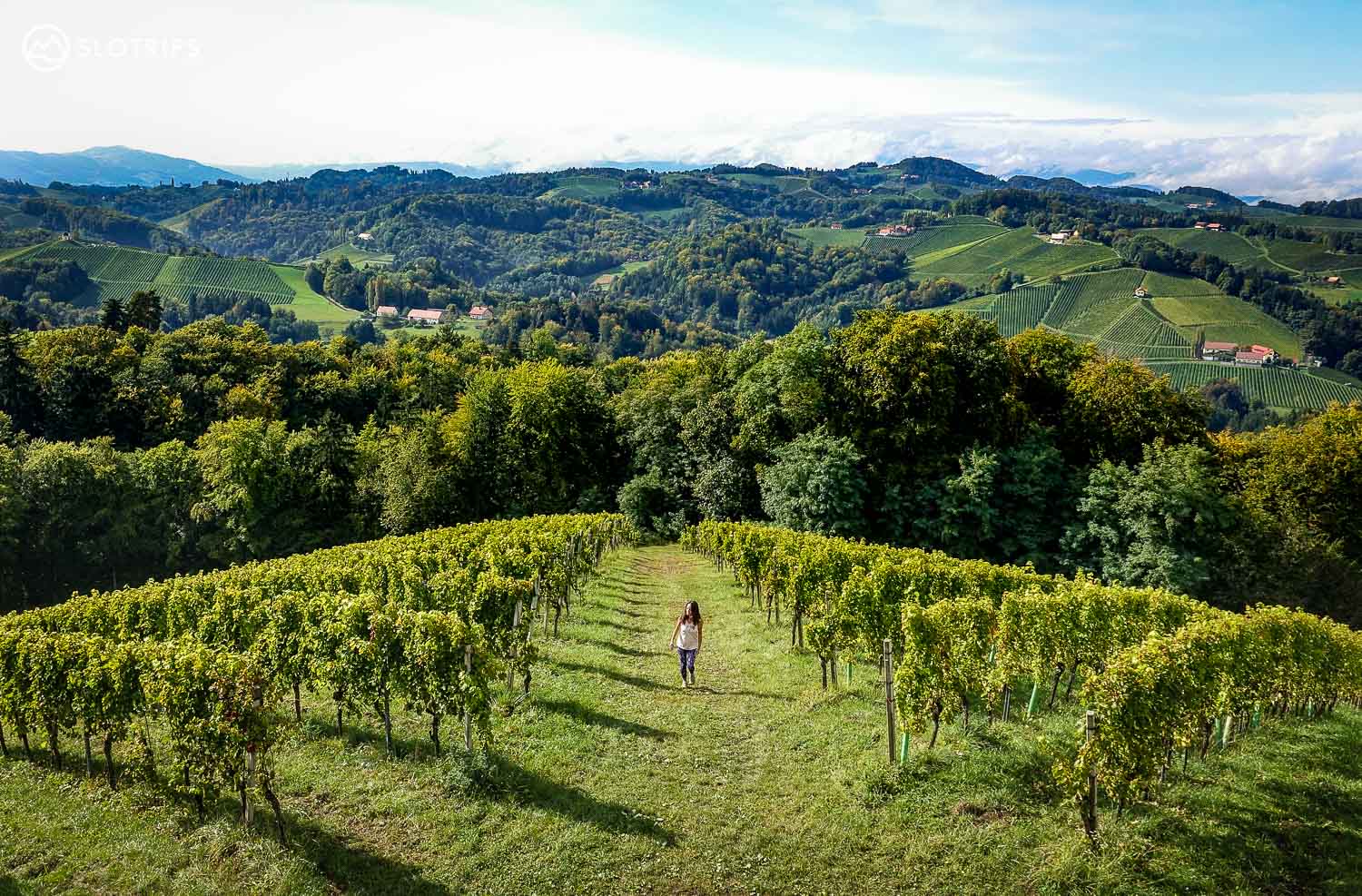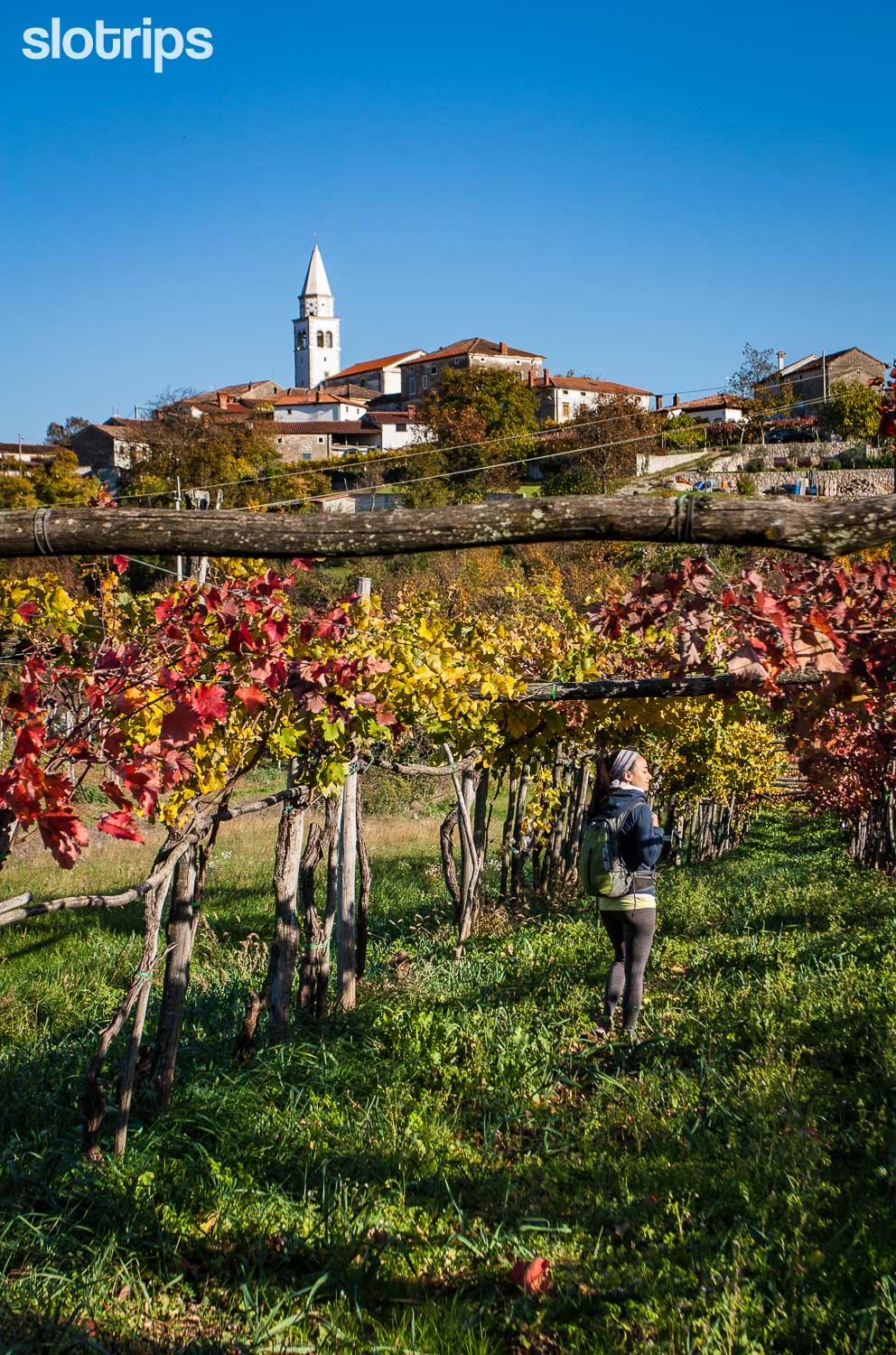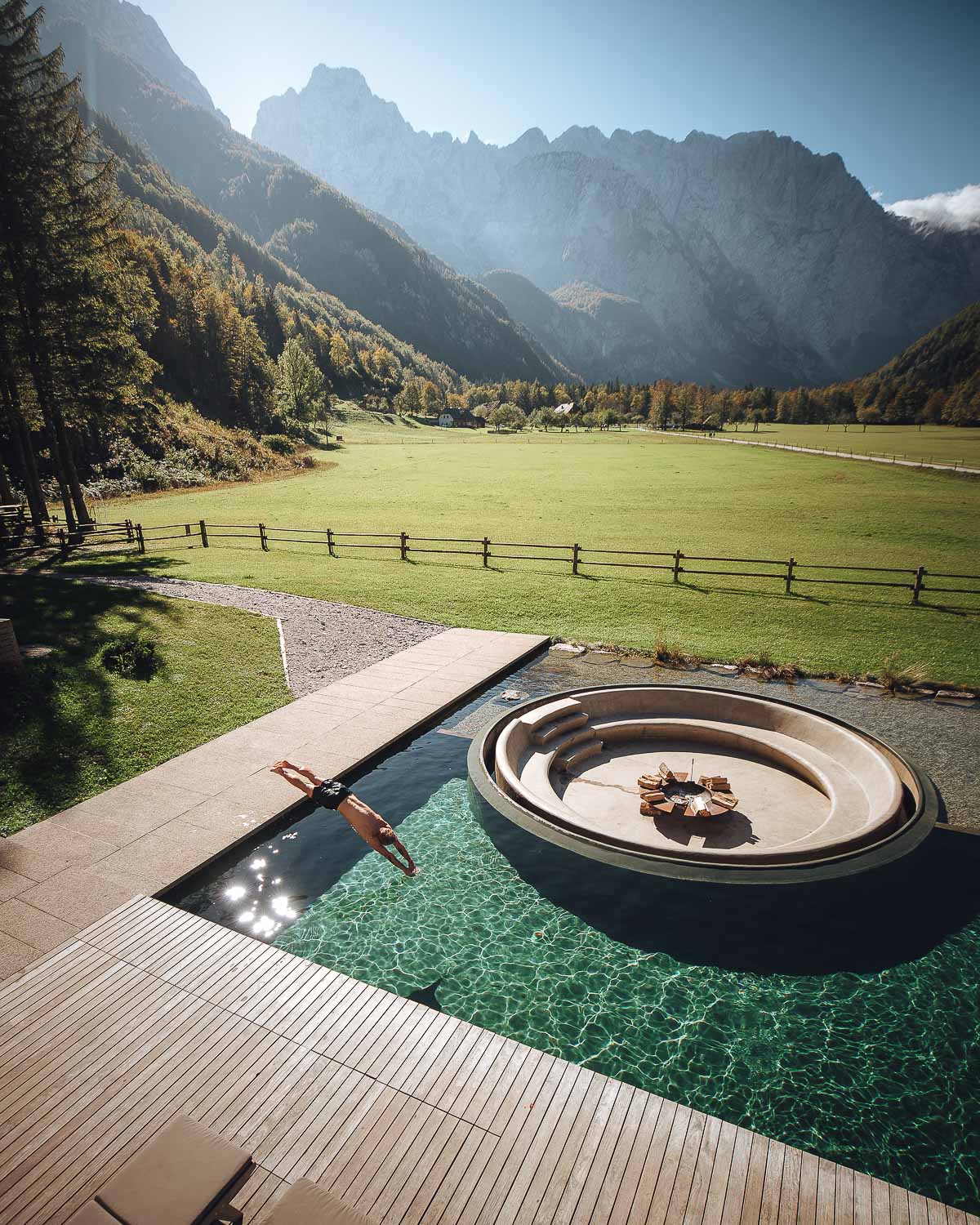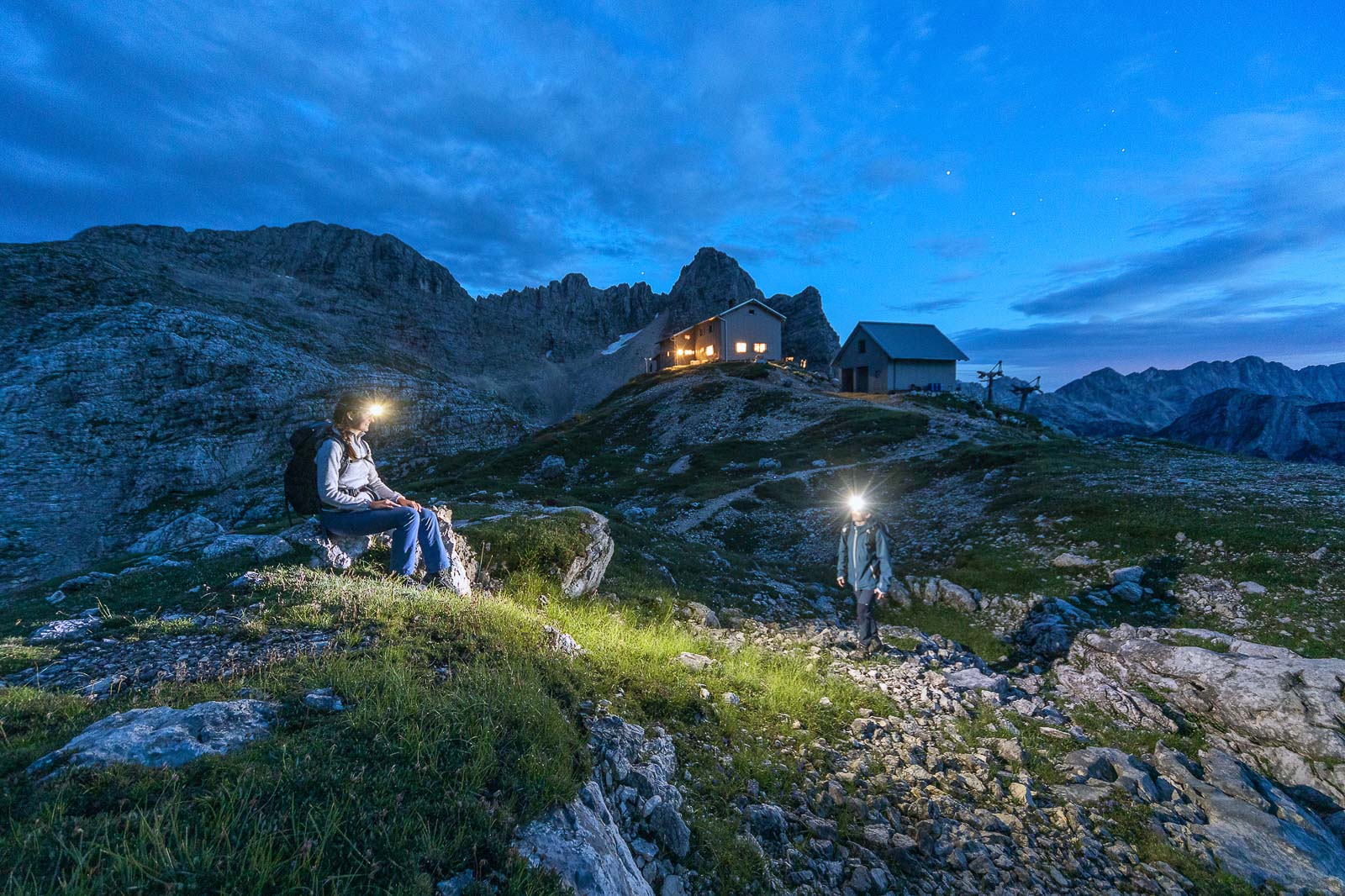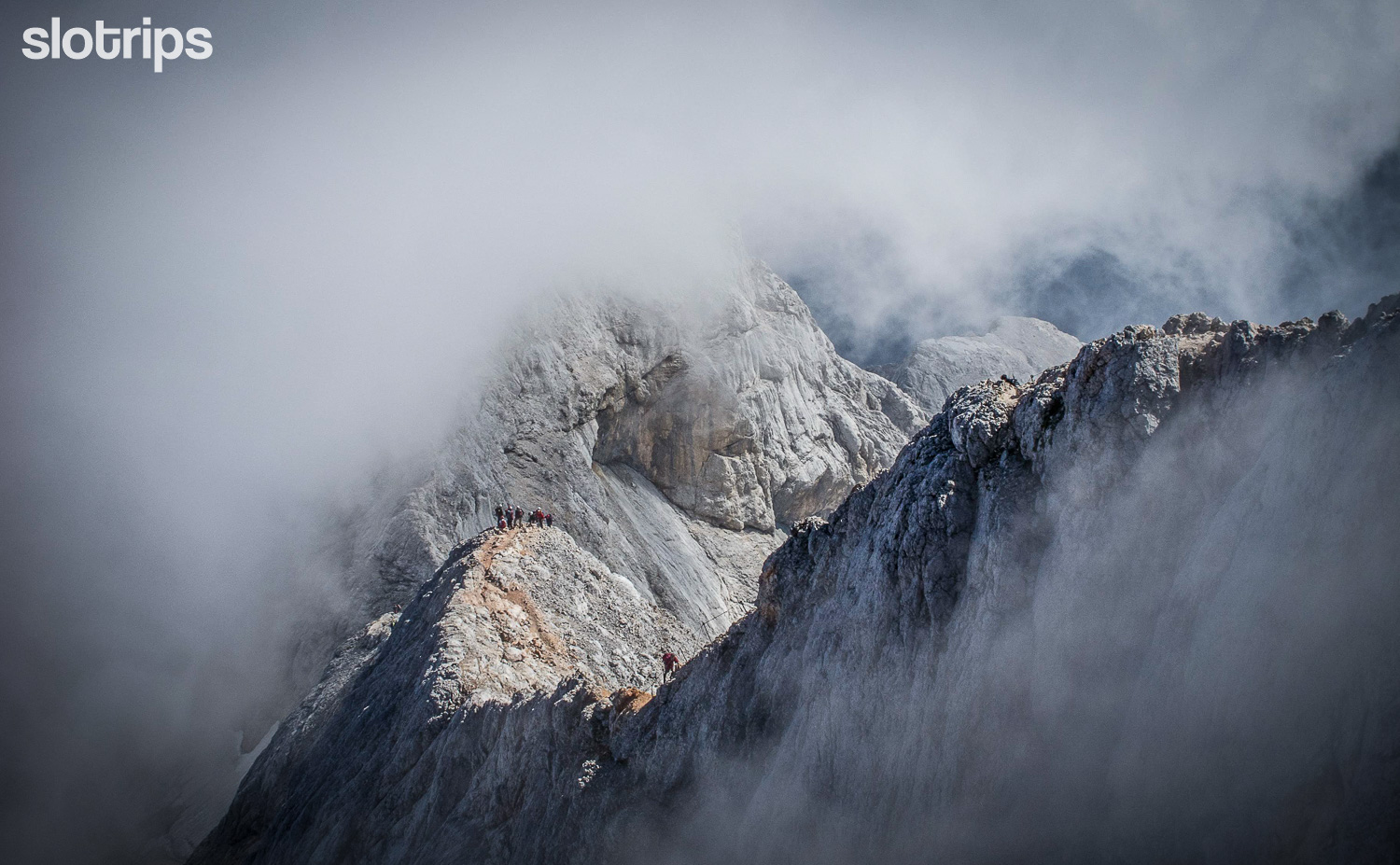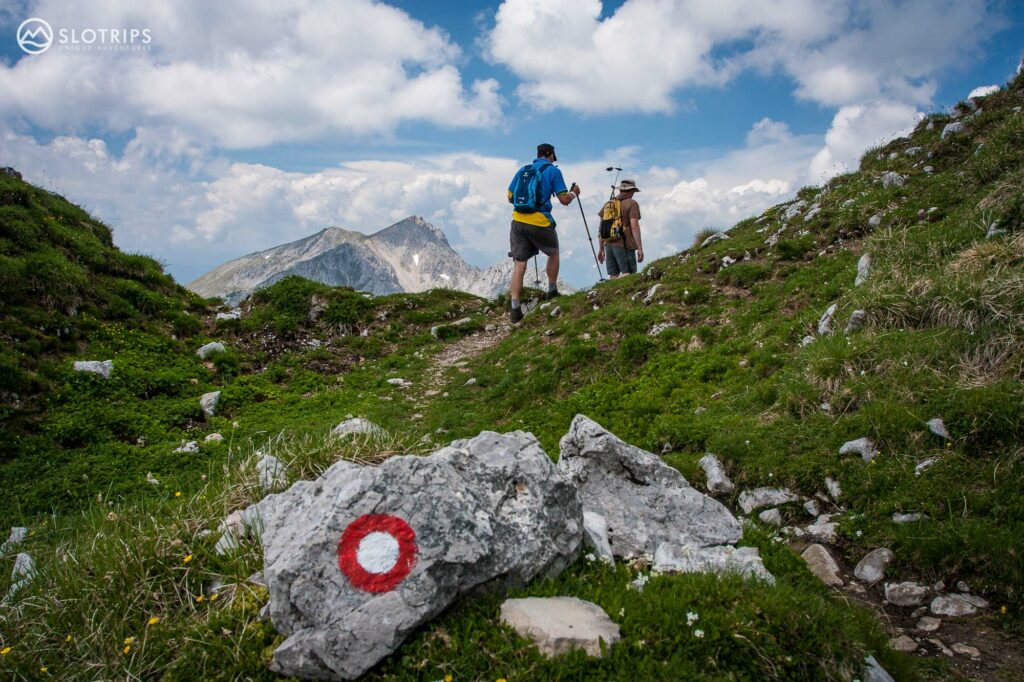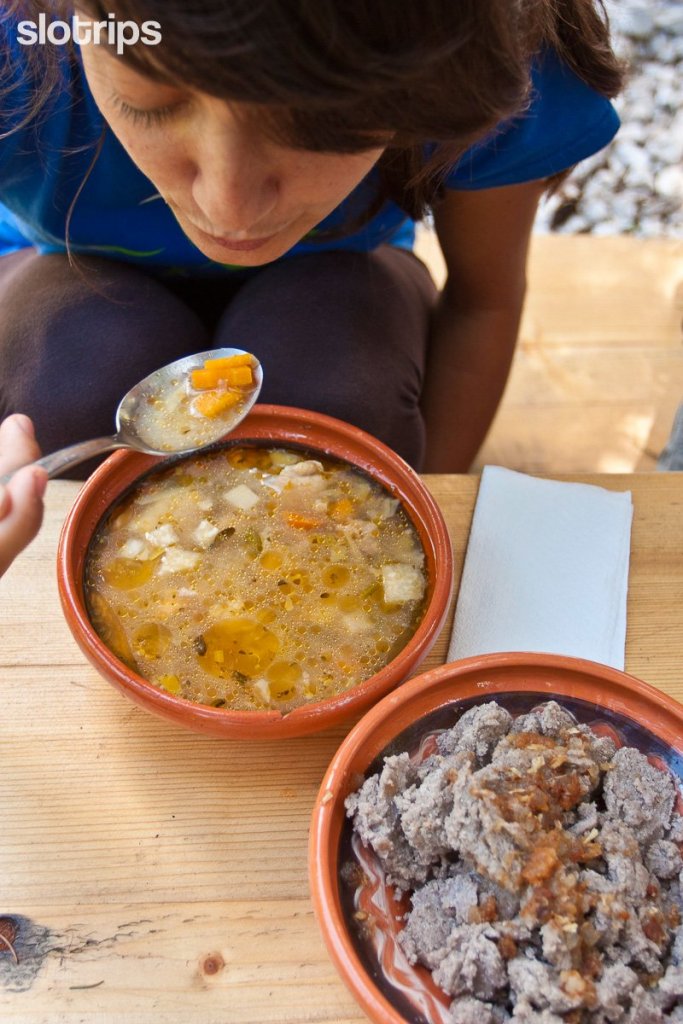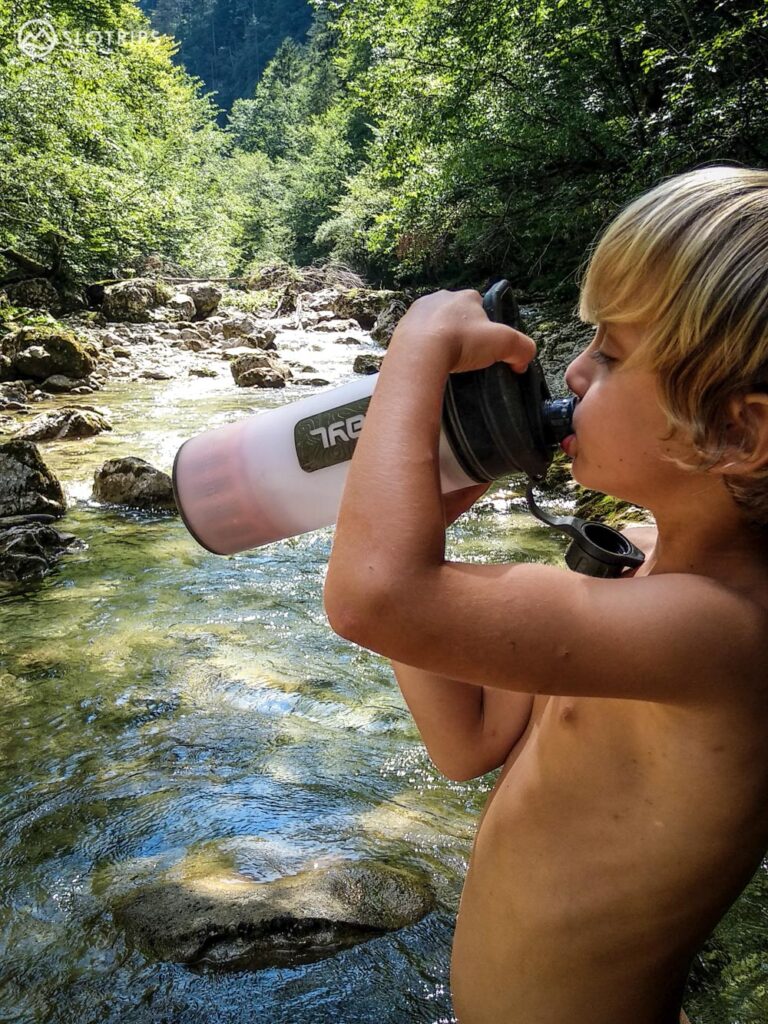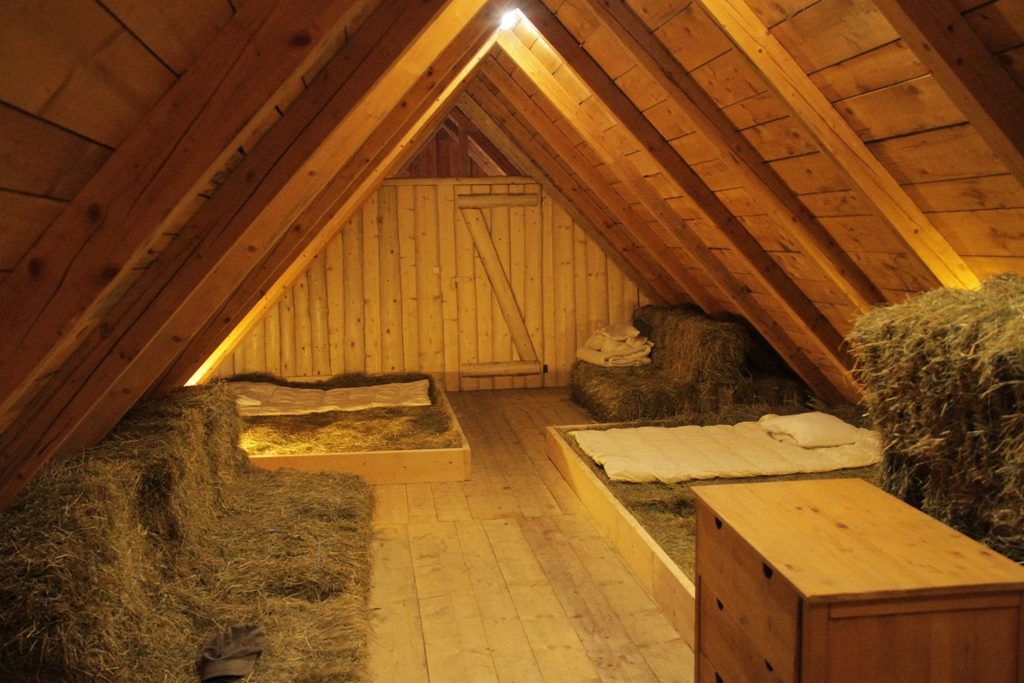Hiking in Slovenia
Insiders' Guide by Slotrips
Slovenia is without a doubt a hiking paradise.
Here, more than 10,000 kilometers of mostly well-maintained and marked hiking trails throughout the country wait for your step. No matter if you are a young adventure seeker, a family with teenagers, or a retired couple whose knees have seen better days – you will love hiking in Slovenia!
This corner of the world, sandwiched between the south-eastern end of the Alps, the Adriatic Sea, and the Pannonian Plain, offers you plenty of hiking pleasures among jagged mountains, turquoise rivers & lakes, lush forests, and wine regions. Showcasing incredible landscape diversity in such a small space. You will hardly find more beautiful spots where you are so close to civilization and at the same time in the wilderness. Near, but far away. In one of the safest countries in the world.
The Julian Alps & the Triglav National Park are probably on top of everyone’s bucket list when planning your hiking trip to Slovenia. You are right, it is a definite highlight! But there is so much more to discover. Keep reading to find out more about hiking in Slovenia – a hiker’s dream on the sunny side of the Alps!
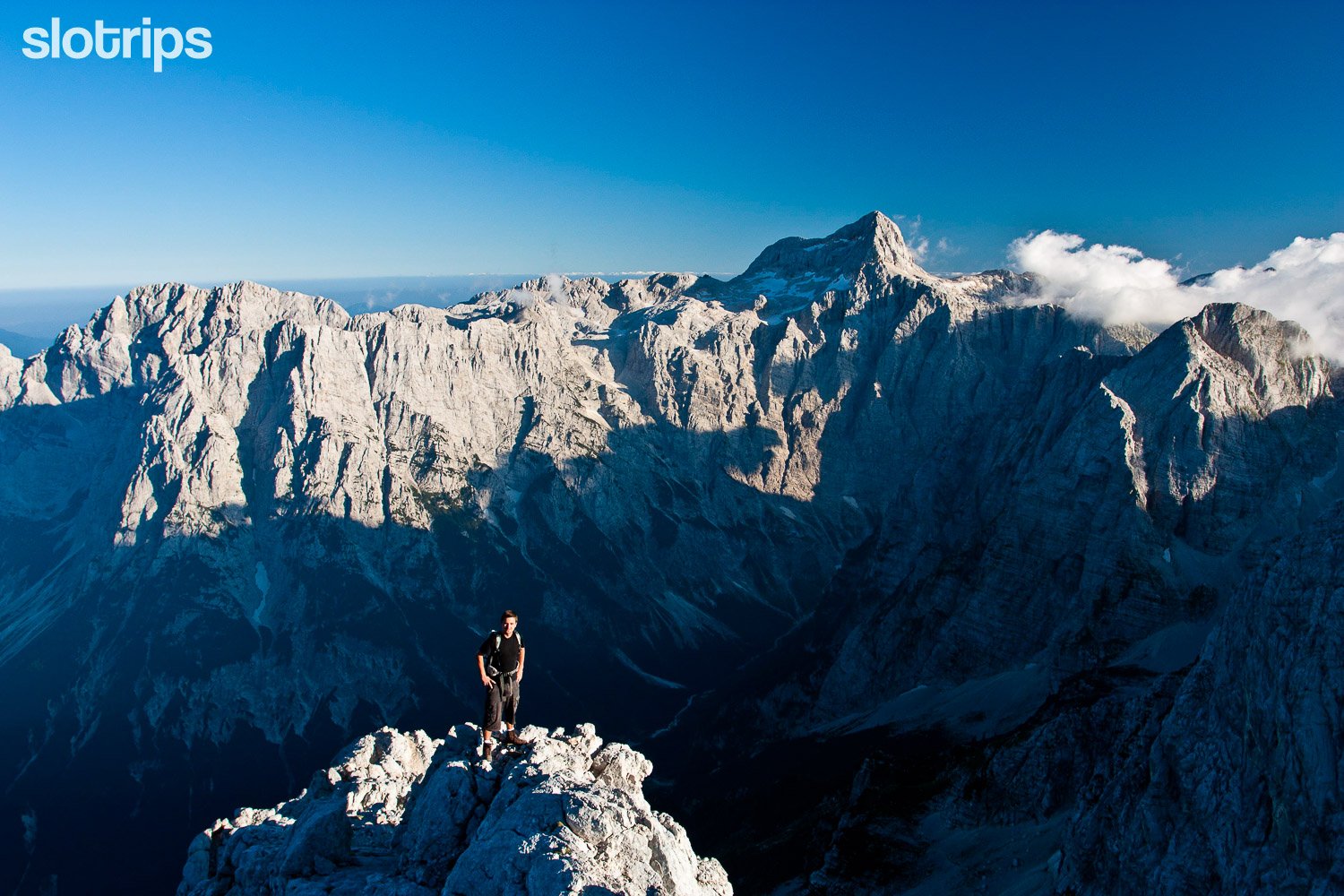
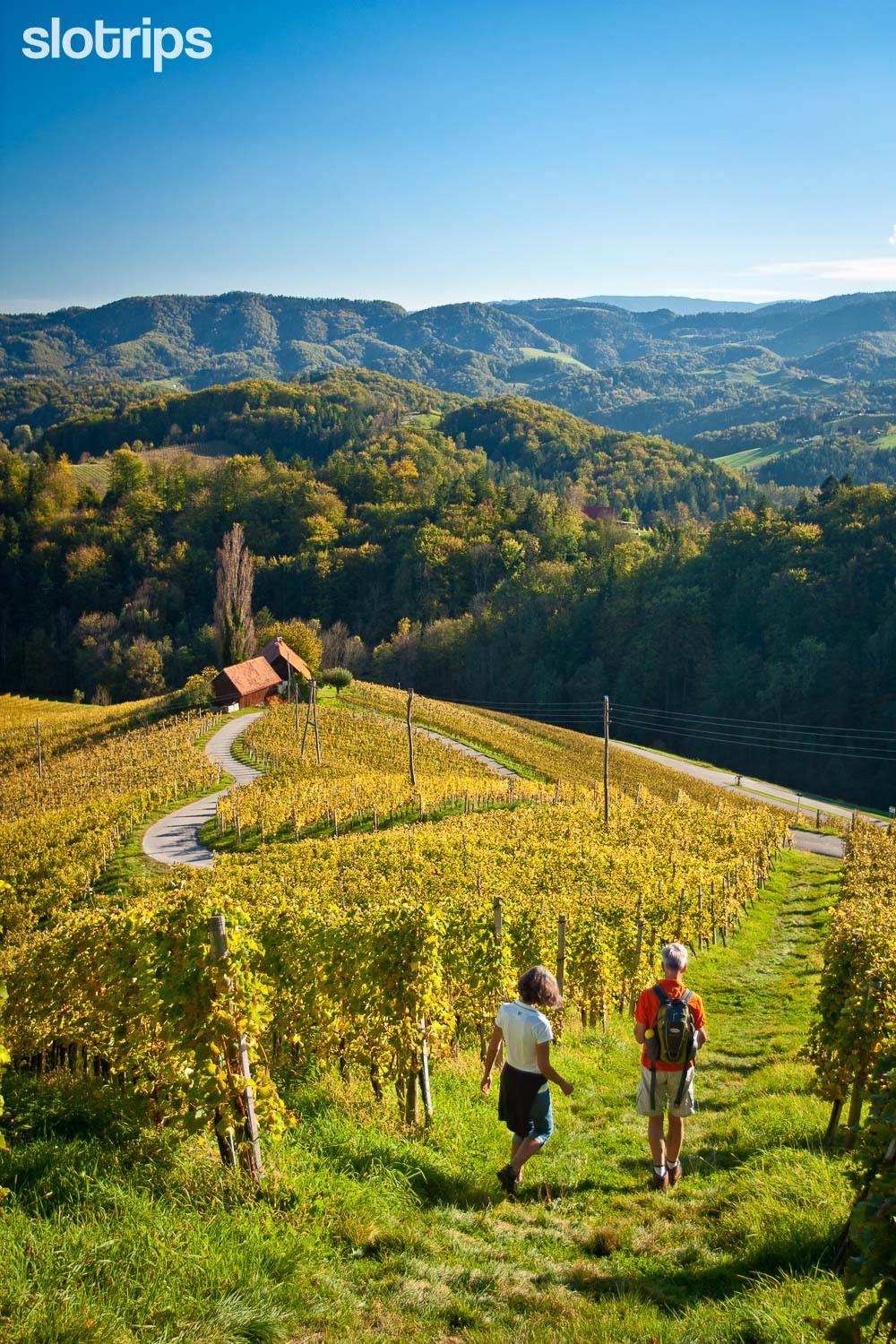
Slovenia - the land of mountain lovers.
Slovenes have always had a special attitude towards our hills and mountains. We respect and love them; we also honor them: Slovenia is one of only two European countries that have a mountain symbol even in the flag! There are seven such countries & flags in the world. The mountains call us to themselves, they offer us inspiration and shelter. That’s why we love to hike, stroll, walk & climb. Here we calm down and rest, here we are in nature, among the springs of numerous high-quality waters and in vast forests that cover almost 60% of Slovenia’s surface. No wonder Slovenia is referred to as the green pearl of Europe.
Visit us and you will get to know why Slovenia is both: a land of hikers and a land for hikers!
Hiking in Slovenia Map
As the highest European mountain range, the system of the Alps stretches in a 1,200-kilometer arc between France and Slovenia. The maps below give you an overview of Slovenian hiking regions and a general introduction of “what is where”.
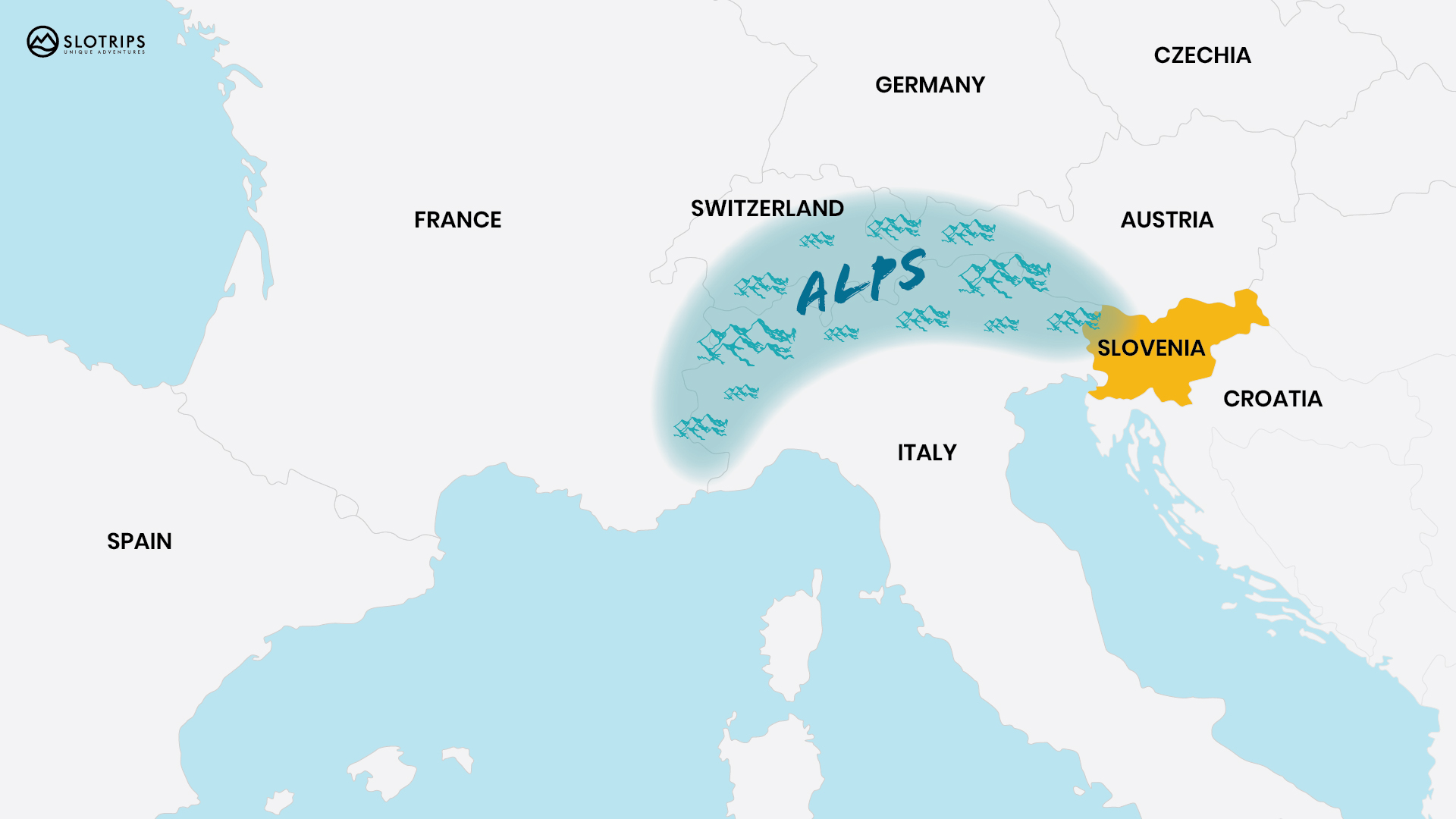
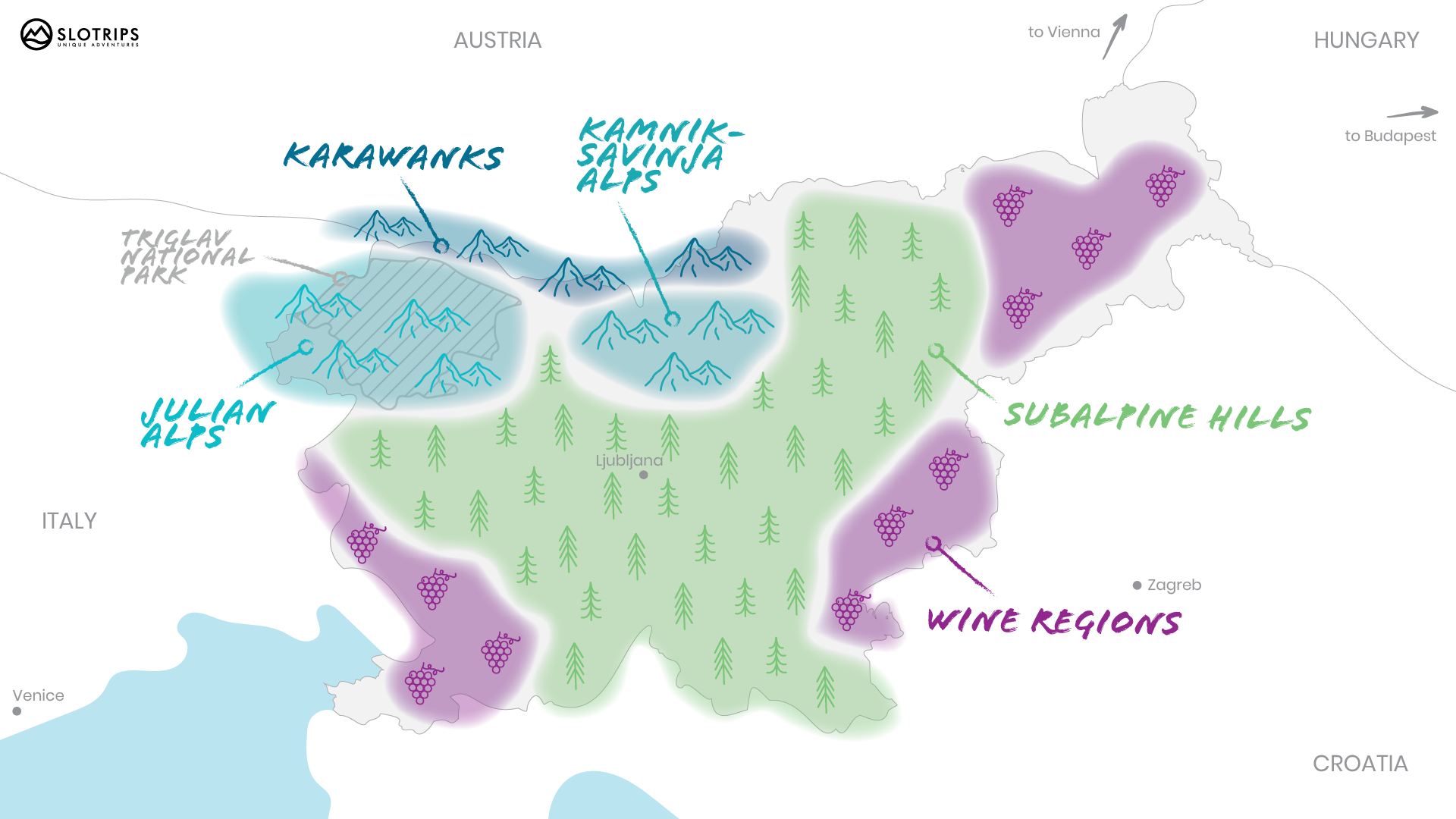
The Slovenian Alps
The Slovenian Alps are definitely the most spectacular place for your hiking holidays in Slovenia. They consist of three mountain chains:
- The Julian Alps – the largest one, located in Slovenia’s northwest (with its western tip peeking into Italy) and home of the stunning Triglav National Park.
- The Karawanks – the longest high mountain ridge splitting Slovenia and Austria.
- The Kamnik-Savinja Alps – the only high-altitude system whose high peaks are exclusively on Slovenian territory.
The landscape of the Julian Alps and the Kamnik-Savinja Alps is very similar to the Italian Dolomites. You’ll climb white limestone peaks, hike extensive spruce & larch forests, and walk lively mountain meadows with shepherds’ dairy farms. But compared to other parts of the Alps, there is much less infrastructure and you won’t find high alpine roads or cable cars taking you to a fancy lodge on the top of every hill. When hiking in Slovenian Alps you will (mostly) have to earn your views. It is more rustic, pristine, and we dare to say – authentic!
The tree line in Slovenia is at approx. 1,600m (5,500ft) and this high mountain world covers 11% of Slovenia’s entire territory. Above the tree line, you should expect rugged limestone terrain, lots of gravel, rocks, steep descents & ascents on sometimes narrow trails. Limestone is porous and there is almost no surface water at higher elevations, thus the options to refill water during your hike are very limited.
The crystal clear (and ice-cold) water re-emerges on the surface abundantly in the verdant valleys where you’ll find many easier & beautiful hikes along rivers, lakes, to spectacular waterfalls, past lonely farmhouses, and through tiny alpine villages.
Don’t miss: 10 Best Hikes in Slovenia
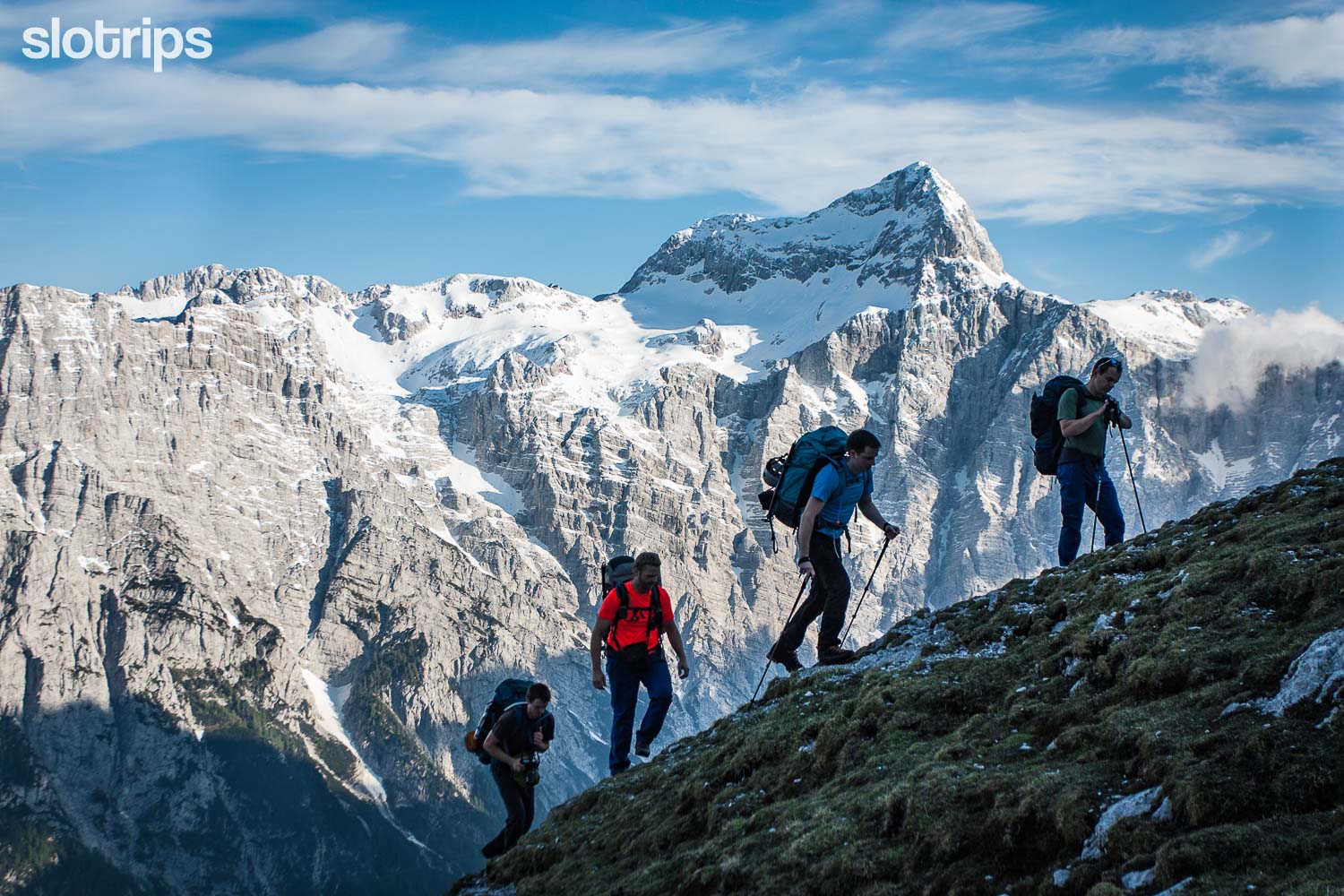
Hiking in the Julian Alps
The Julian Alps are the most extensive and most important part of alpine Slovenia. Here fifteen of Slovenia’s highest peaks rise up to the skies, including Mt. Triglav – Slovenia’s highest mountain. The main massifs of the Julian Alps are built of limestone and dolomite up to 200 million years old. Since they were once covered by the sea, don’t be surprised if you come across fossils of shellfish and other marine organisms while hiking through their rock foundations.
Due to its special importance as a natural whole, Unesco has declared the Julian Alps a biosphere reserve. At the same time, almost all of Slovenia’s Julian Alps are located within the protected area of the Triglav National Park, which was established in 1924 as one of the first protected territories of this kind in Europe. That being said:
If you are hiking in the Triglav National Park you are most certainly hiking in Slovenia's Julian Alps.
The Julian Alps are squeezed into Slovenia’s north-western corner with the Sava river bordering its north-east side and the turquoise Soča river cutting through the heart of the Julian Alps from north to south.
For day hikes it is best to base yourself in one of the alpine valleys or towns around Lake Bohinj, Lake Bled, the Kranjska Gora region, or the spectacular Soča Valley. These mountain centers offer comfortable hotels & dining options, but also a wide variety of other activities like cycling, fly-fishing, water sports, swimming, rock climbing, paragliding, and more. Making them a great choice for your multi-active holidays in Slovenia.
Best day hikes in the Julian Alps & Triglav National Park
- Mt. Viševnik – the easiest accessible 2000m peak
- Mt. Vogel – best views above Lake Bohinj
- Slemenova špica – best easy hike in the Julian Alps
- Mt. Triglav – the highest Slovenian mountain
- Mt. Mangart – best short difficult hike
- Mt. Krn – best WWI hike above the Soča Valley
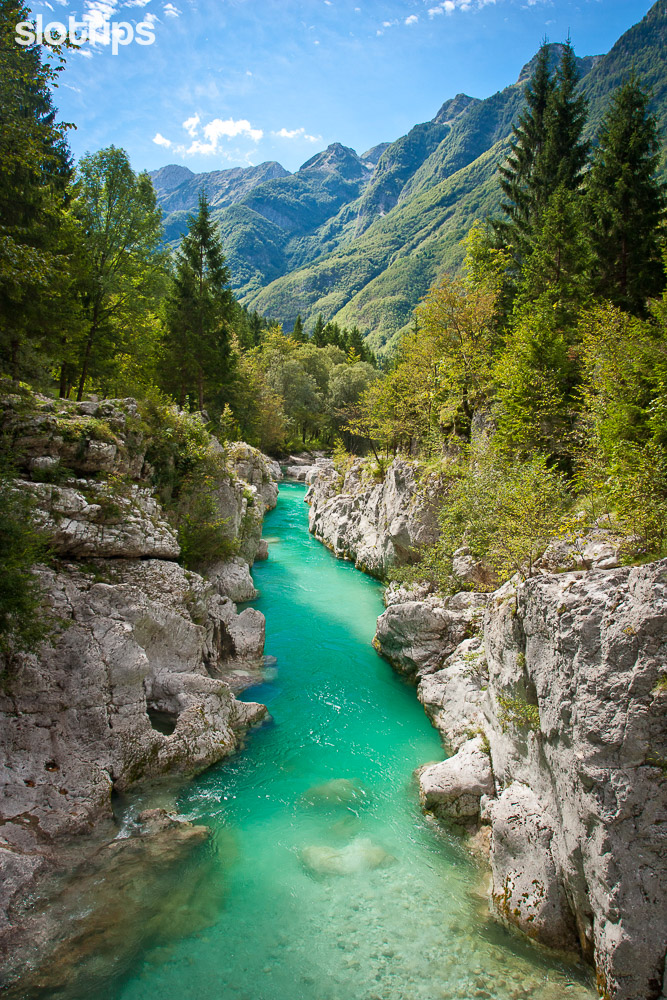
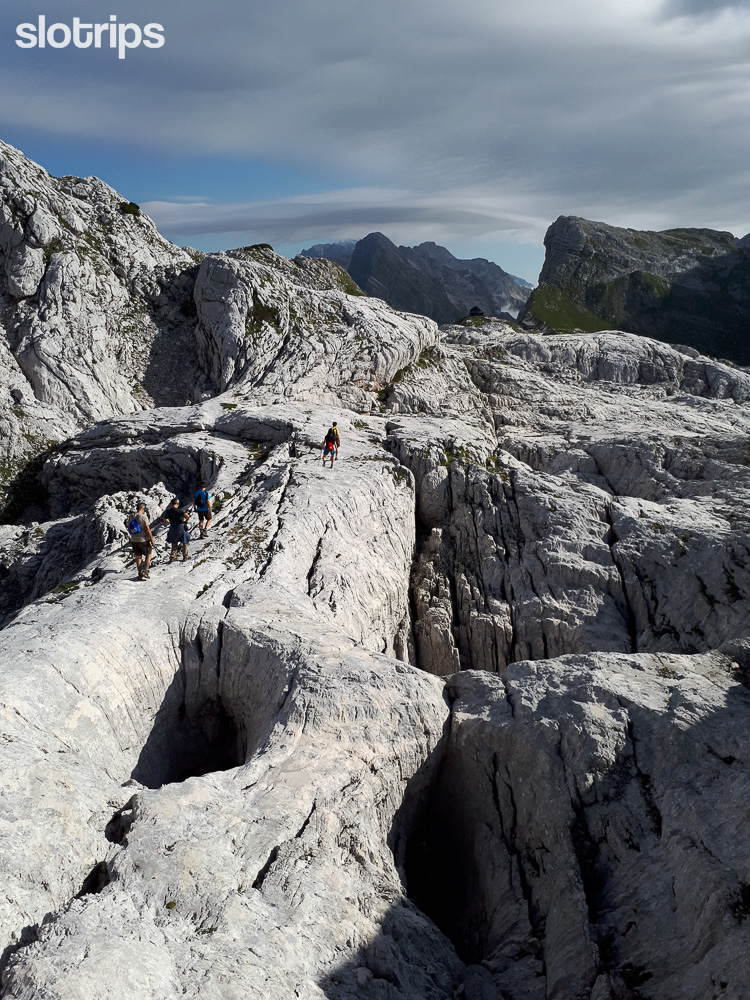
The Julian Alps are also the most extensive area for hut-to-hut hiking in Slovenia with numerous multi-day trekking routes. Don’t expect a walk in the park and you’ll have to be reasonably fit to enjoy a multi-day hike in the Julian Alps.
Generally speaking, the hut-to-hut routes on the south side (around Lake Bohinj) are easier. The more ambitious hikers who are ready to tackle steeper trails and occasional sections secured with steel cables should consider the Julian Alps traverse from north to south (from Kranjska Gora to Lake Bohinj). Don’t forget: hut-to-hut hiking tours in the Julian Alps are only possible from late June until late September when the mountain huts are open!
If you are up for a more comfortable inn-to-inn hiking tour with luggage transfer try the spectacular Alpe-Adria Trail (our favorite!) or the newly designed Juliana Trail. They are both doable between April and November.
How about a circular loop around the Julian Alps by bike?
Our favorite hiking tours in the Julian Alps & Triglav National Park
HUT-TO-HUT HIKING TOURS
3-day guided: Best of Julian Alps Hut-to-Hut
4-day self-guided: Triglav National Park Adventure
INN-TO-INN HIKING TOURS
3-day guided: Best of Alpe Adria Trail
4-day self-guided: Alpe Adria Trail Adventure
8-day self-guided: Best of Alpe-Adria & Juliana Trail
ALL-IN-ONE HIKING TOURS
8-day guided: Best Walks in Slovenia
8-day guided: Discover the Slovenian Alps
9-day self-guided: Mountains to Sea
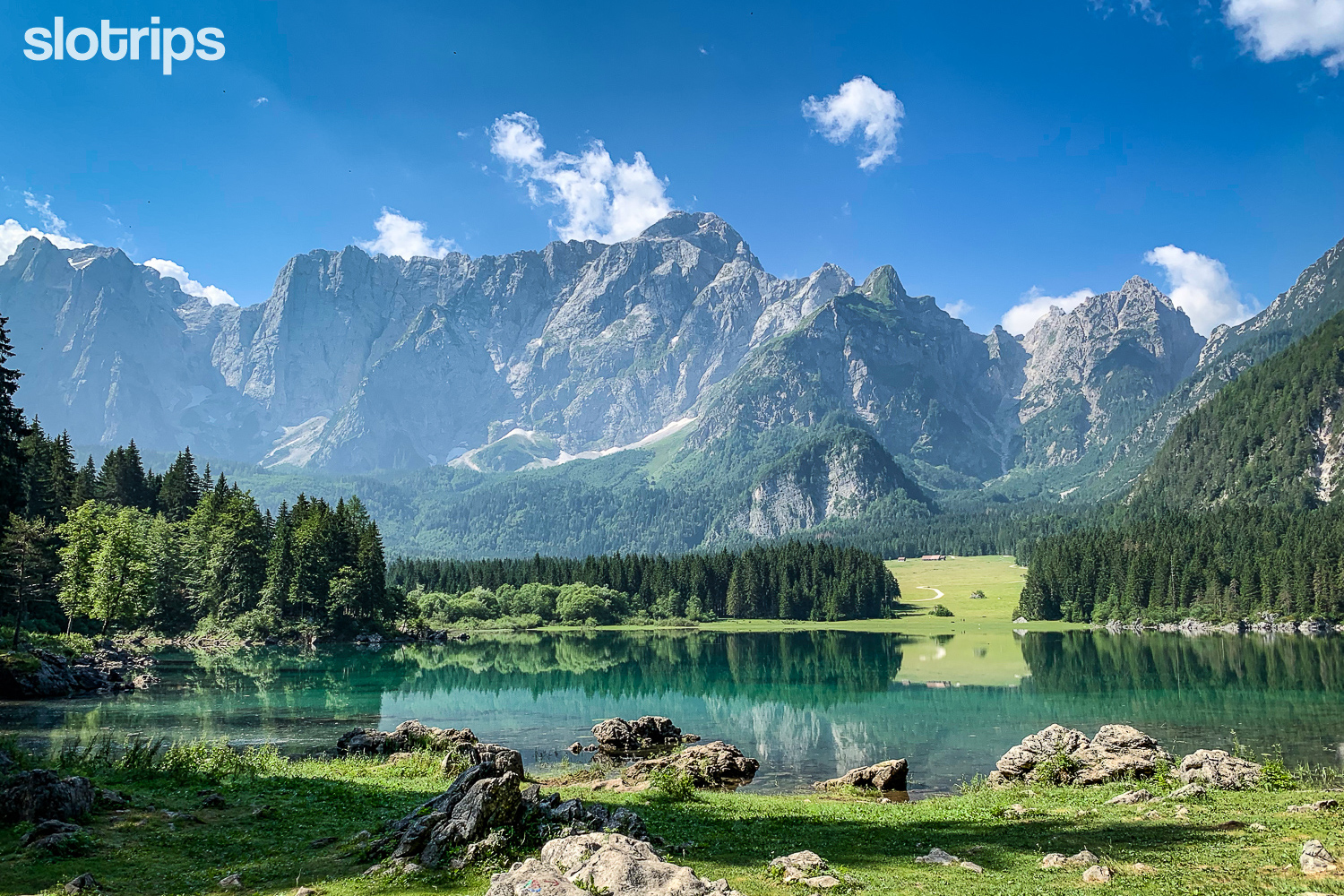
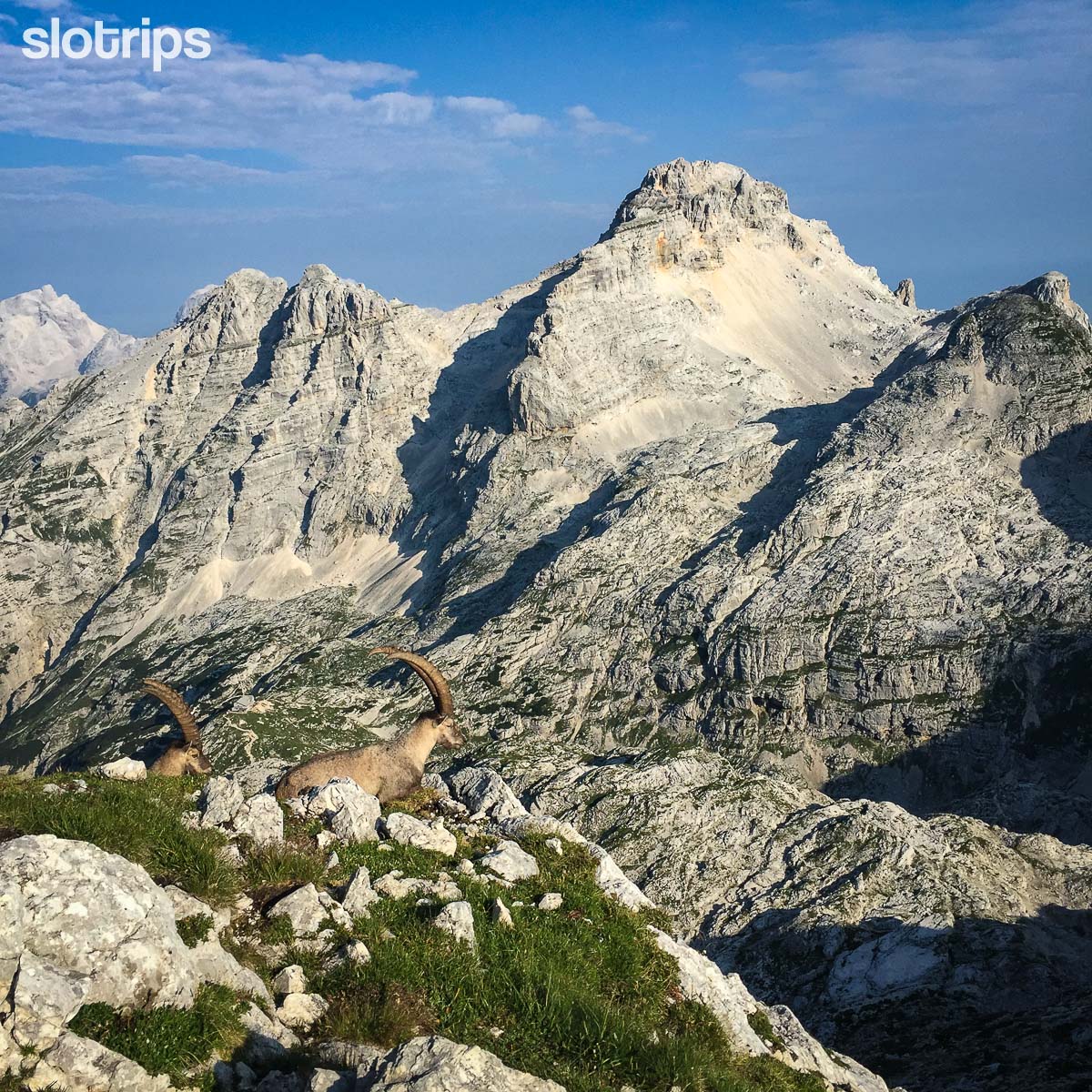
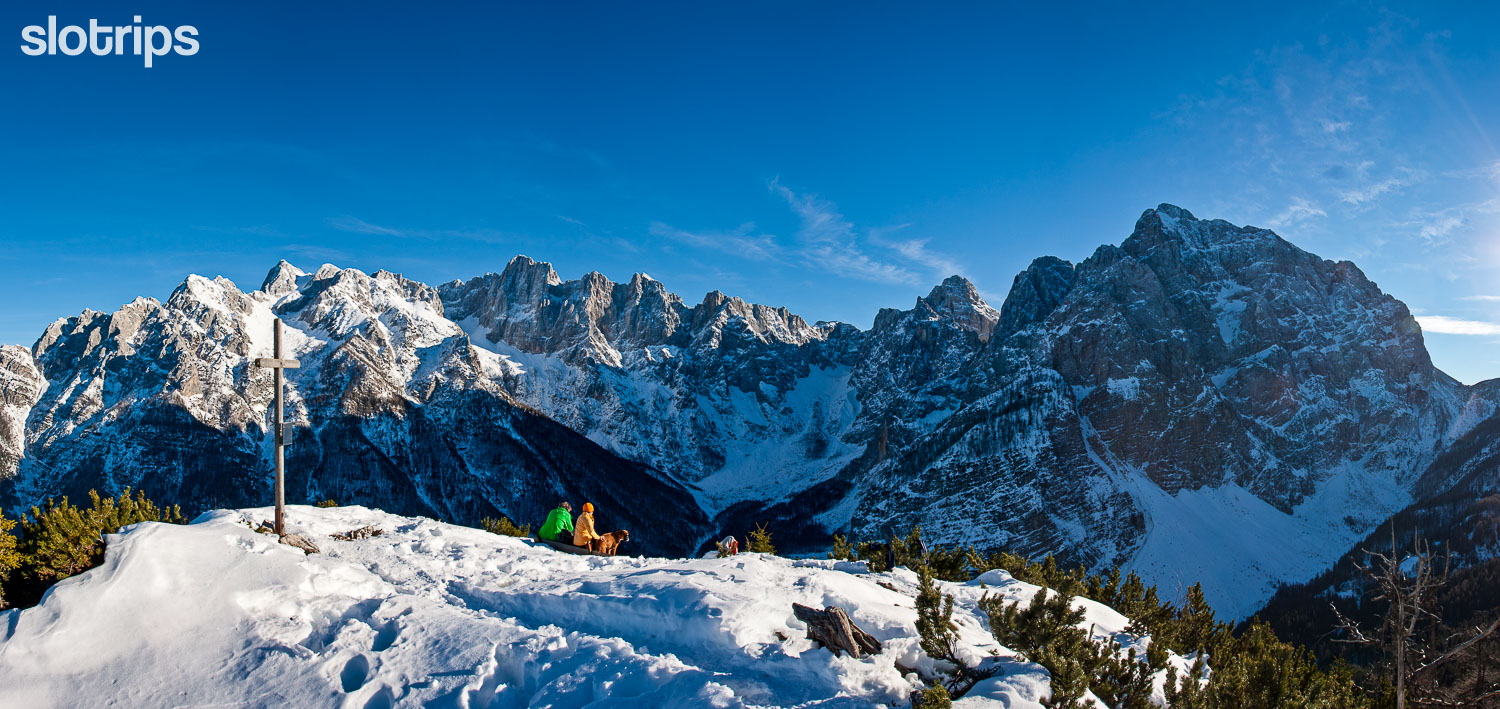
Hiking in the Karawanks
The Karawanks is the longest Slovene mountain range. Their saddles and ridges stretch from the triple-border between Italy, Austria, and Slovenia, and then mostly along the Slovenian-Austrian border further 120 kilometers to the east.
In general, the Karawanks are more accessible and friendly for hikers than the Julian Alps and the Kamnik-Savinja Alps. Their massifs are not intersected by such magnificent alpine valleys, their north sides are usually steep & rocky, but the southern, green slopes on the Slovenian side are gentler. Therefore hikes to the Karawanks’ peaks or along individual ridges are usually shorter and easier.
As a long ridge, the Karawanks offer some exceptional ridge crossings, for example, our Trekking the Karavanks hut-to-hut hiking trip. Or crossing the longest single Slovene mountain, Košuta. How about the wonderfully wild border trails above Kranjska Gora and Jezersko? A hidden gem!
Because of easier access, there are fewer mountain huts in the Karawanks. They are mostly a popular “pit-stop” for local day hikers. Of course, many stages of long-distance trails have to lead through such a long ridge as well: Slovene Mountain Trail runs across the Karawanks, and a few sections of the international trail Via Alpina as well.
Hike the Karawanks towards the end of May & June and you will be surrounded by carpets of colorful flowers along the way. The slopes of Golica, for example, will be all white – because of flowering daffodils, not because of snow.
Best day hikes in the Karawanks
- Mt. Golica– the daffodil paradise in May/June
- Veliki Vrh in Košuta ridge – amazing views and a popular hut along the way
- Mt. Stol – The highest peak in the Karawanks
- Mt. Begunjščica – panoramic views close to Lake Bled
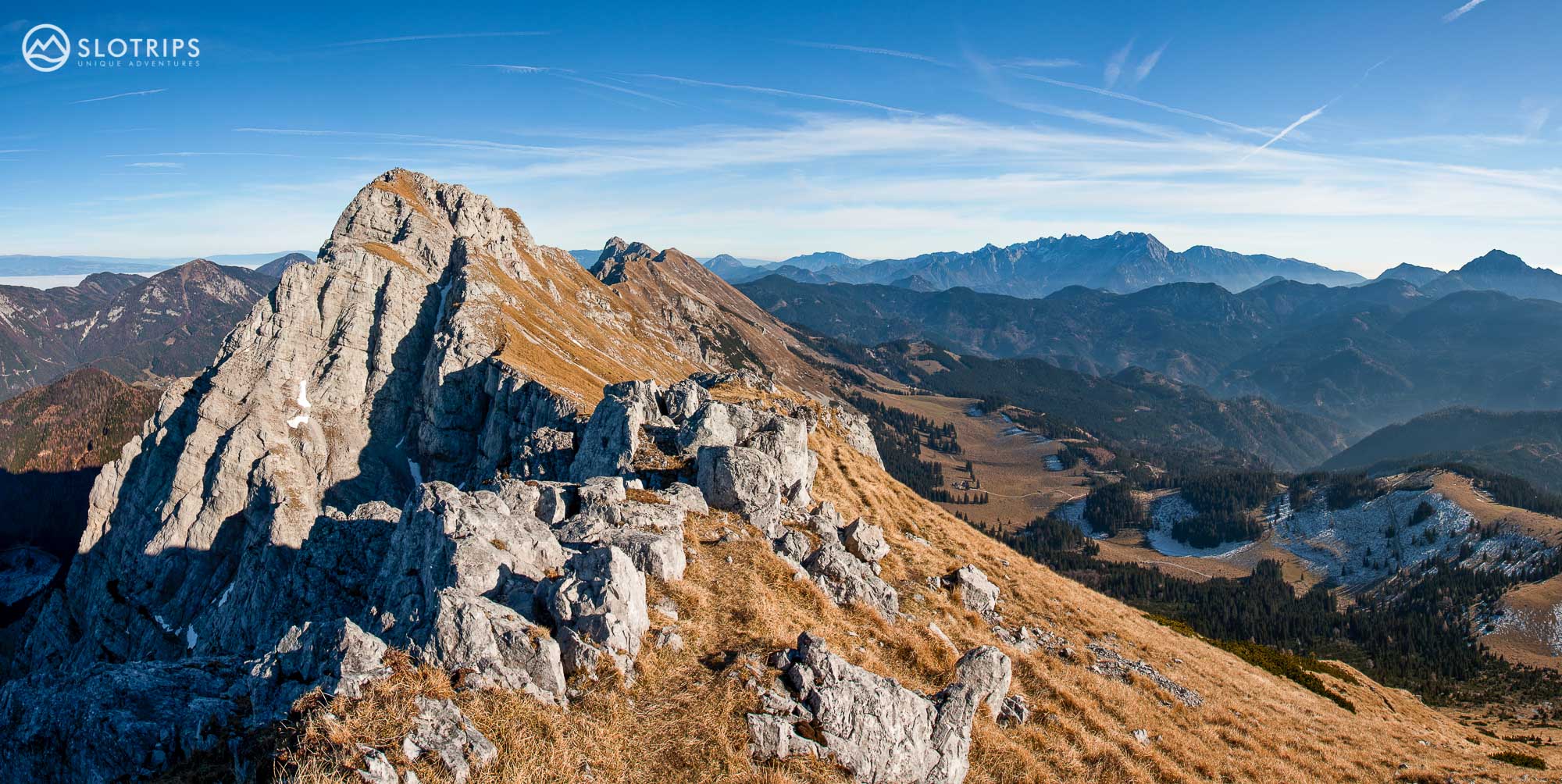
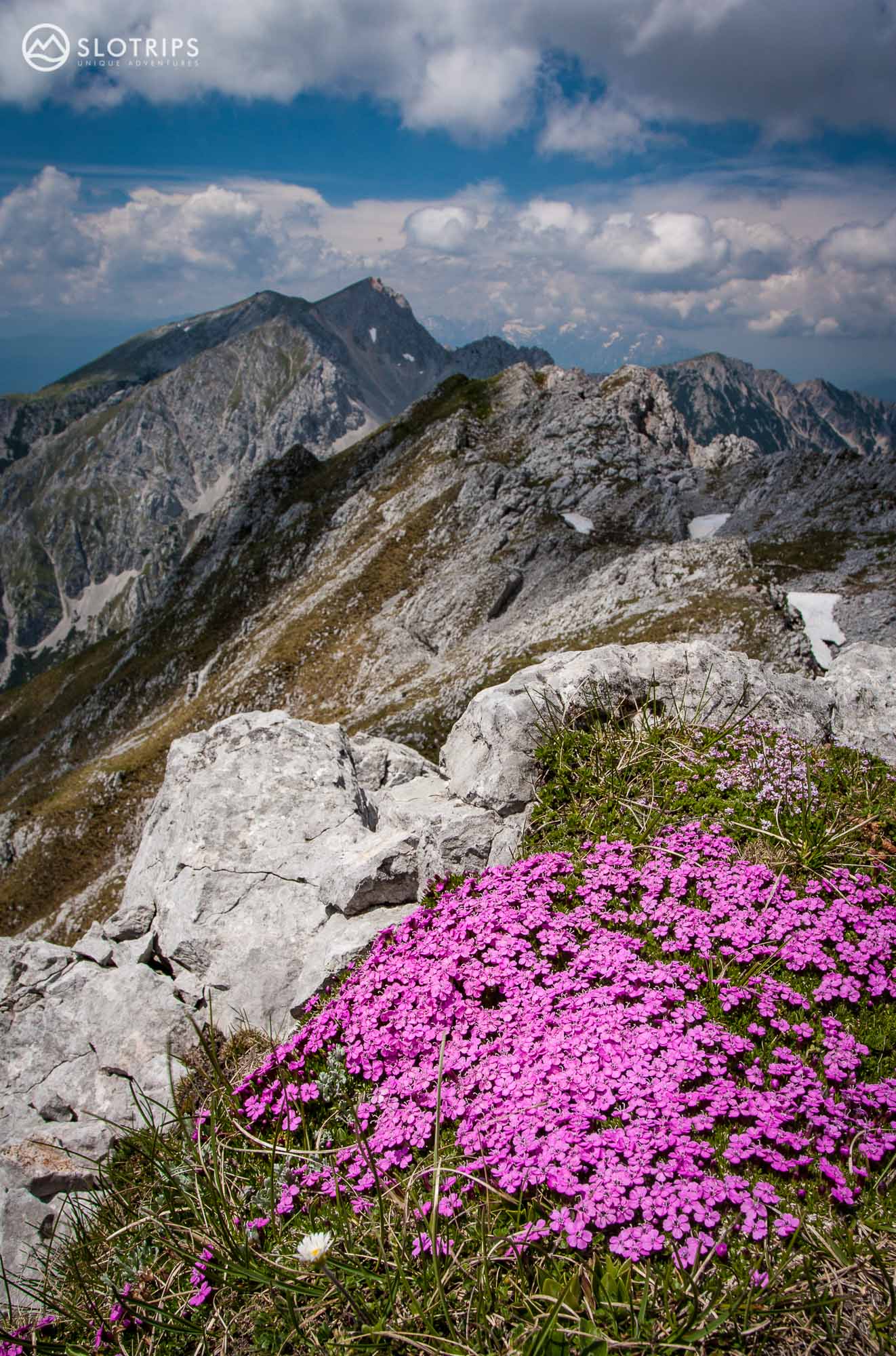
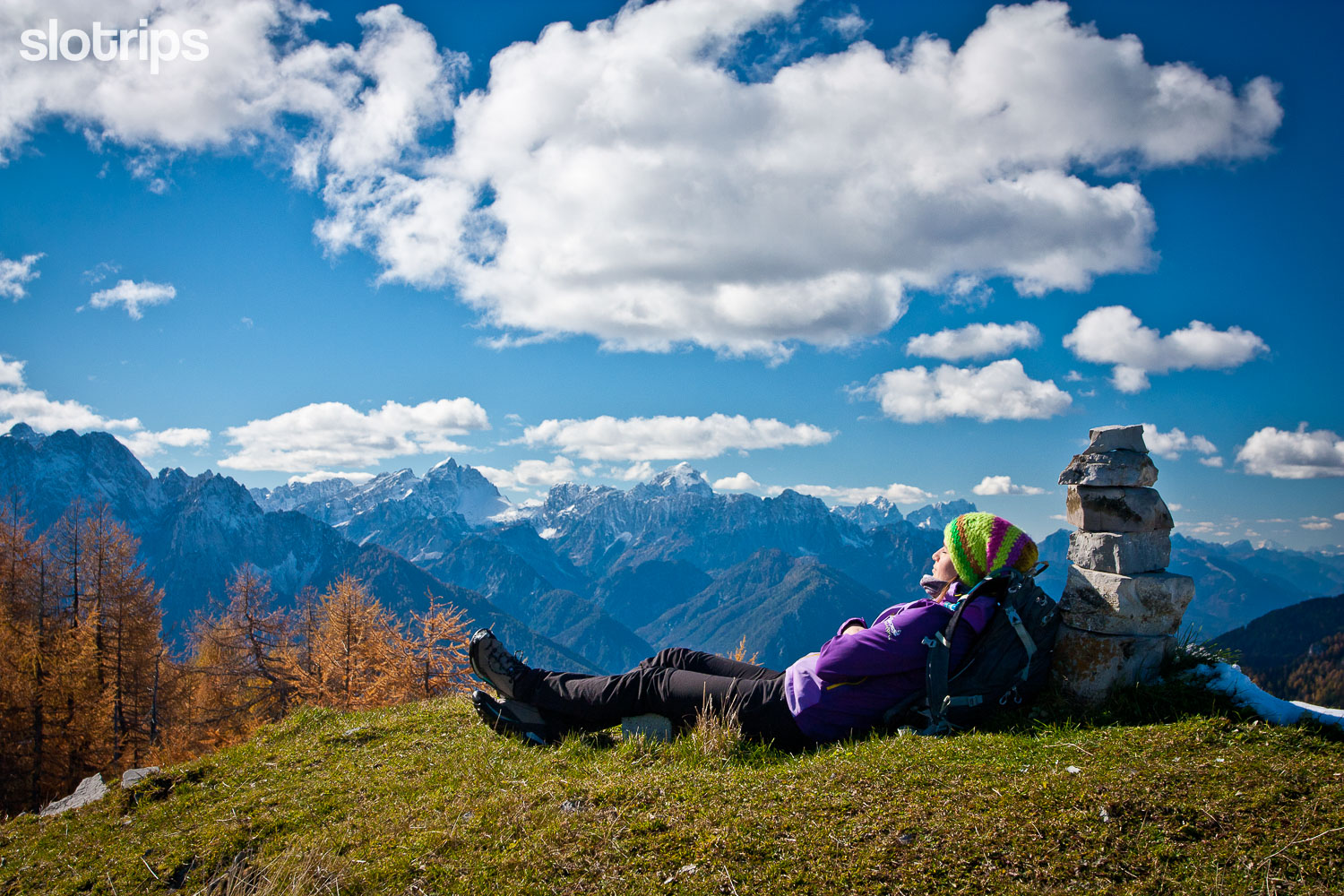
Hiking in the Kamnik-Savinja Alps
If you look north from the old city center of Ljubljana on a beautiful day you will immediately spot the Kamnik-Savinja Alps. In the length of 66 kilometers from west to east and a width of up to 20 kilometers, they occupy the central northern part of Slovenia.
The Kamnik-Savinja Alps, named after Kamnik (a cute medieval town) on their southern slopes and Savinja (an alpine river & a fly-fishing paradise) in the north, are wilder than their Karawanks neighbors. There are basically very few high mountain roads to make your access to the trailheads easier. This means you will have to overcome up to 1500m (5.000ft) of elevation gain to climb the highest peaks of the Kamnik-Savinja Alps.
If you add the rough karstic terrain and several via-ferrata sections you’ll come across along your way, you are getting a proper mountain adventure. Keep in mind: there are fewer mountain huts in the Kamnik-Savinja Alps and the multi-day hiking routes are only suitable for very fit and experienced hikers.
Logar Valley, Velika Planina, Jezersko
On the other hand, several exceptional pearls are easily accessible for hikers: the Logar Valley with Rinka waterfall, probably one of the most beautiful alpine glacial valleys in Slovenia, and Velika Planina, one of the largest and most beautiful active alpine meadows in Europe. A hiker’s paradise, no matter the season!
If you are looking for a place to base yourself for a couple of days and explore the Kamnik-Savinja Alps, you should consider the wonderful alpine hamlet of Jezersko or one of many organic alpine farms in & around the Logar valley. Your best choice for off-the-beaten-path hiking holidays in Slovenia!
Best day hikes in the Kamnik-Savinja Alps
- Velika Planina – best easy (& popular!) hike on the biggest alpine meadow
- Kamnik Saddle & Mt. Brana – best serious hike in Kamnik-Savinja Alps
- Mt. Grintovec – the highest peak of Kamnik-Savinja Alps
- Goli Vrh in Jezersko or Govca (Olševa) above the Logar Valley.
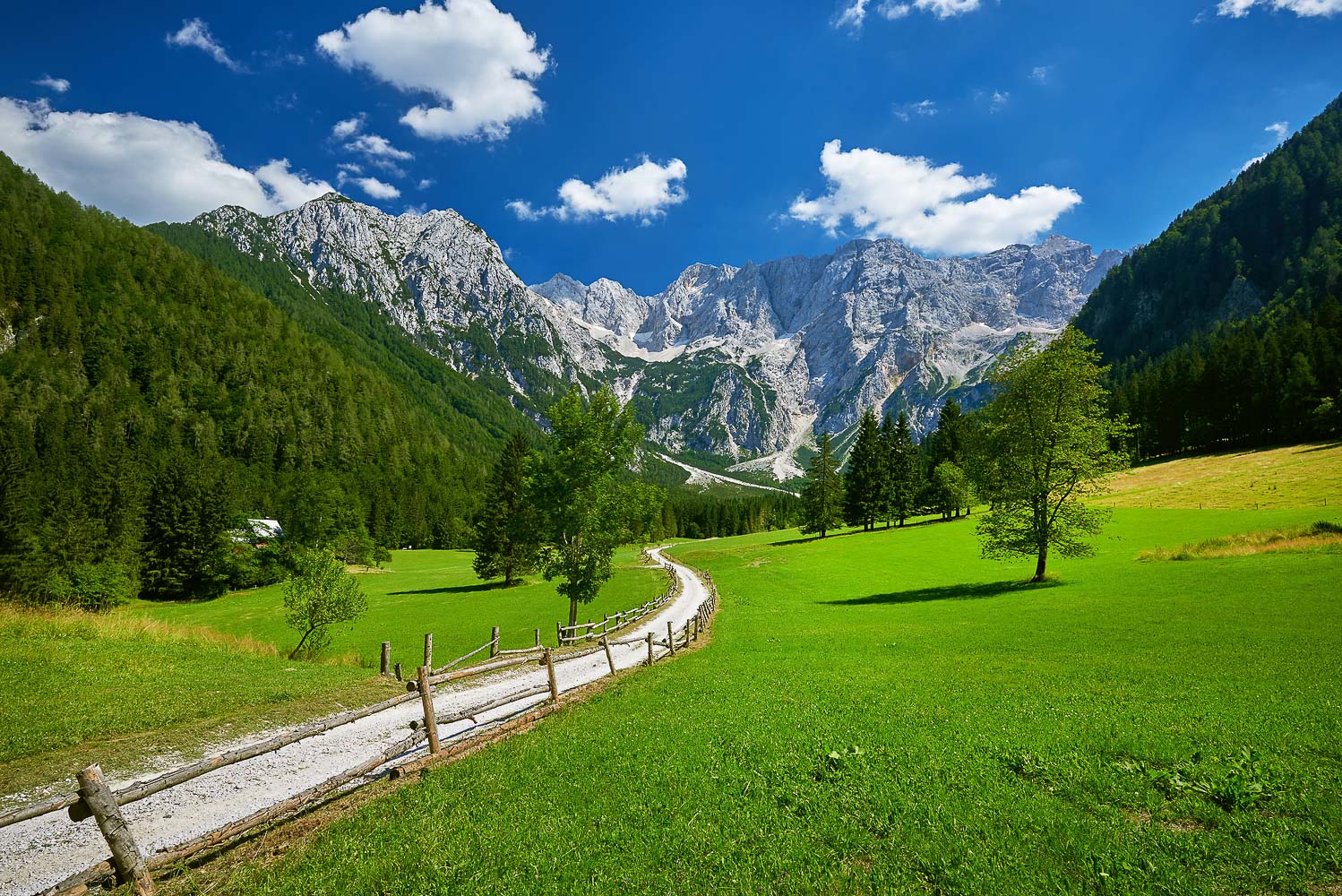
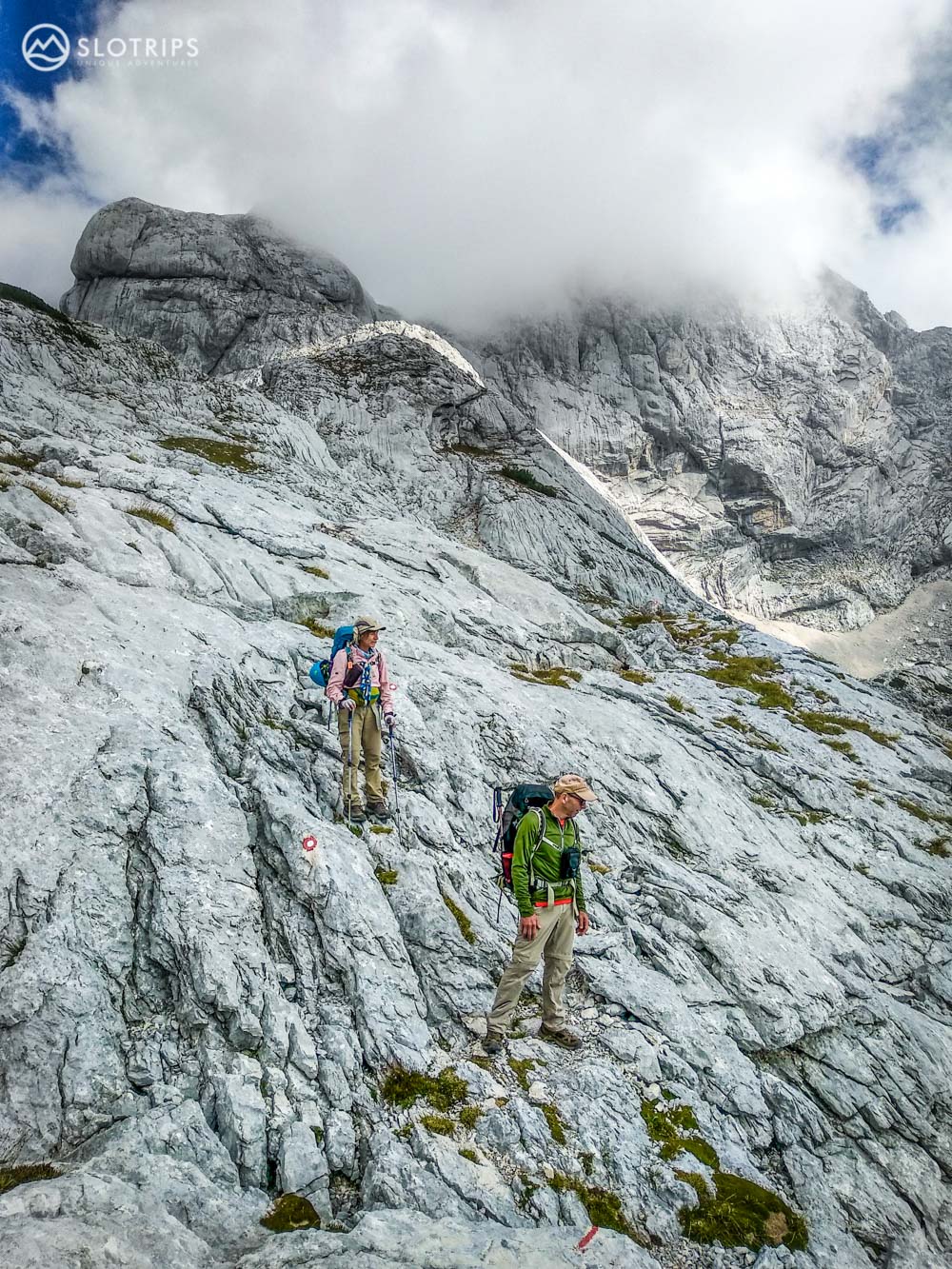
Hiking in Slovenian Subalpine Hills
As the Slovenian Alps descend towards the south & east, you will enter the land of extensive forests, green valleys, hills dotted with small villages, and scattered mountain farms with steep meadows and pastures. This is the typical Slovenian countryside you will find basically all over the country. While it might not be super high on your hiking bucket list, it will give you a great insight into the Slovenian culture & way of life.
Here you will barely meet any foreigners, but mostly us, the locals on our after-work hike or a family walk to our favorite mountain hut for Sunday lunch. Join us on these trails, grab a basket and go mushroom picking, forage the wild berries, ramsons (wild garlic) for pesto, elderflower for syrup, dandelion for salad, rosehip for tea, stinging nettles for a soup or pie (yes!), and the list goes on and on! Do you like foraging? Let us know and we will include it in your customized hiking trip in Slovenia!
Enough food, let’s talk hiking again! The highest peaks of the subalpine region reach the tree line at around 1,600m (5,000ft) rewarding you with exceptional views. Hike up there to feel the winds above Vipava valley on Nanos, explore the karstic terrain (and maybe meet a bear) on Snežnik, follow the Rapallo border on Blegoš & Porezen, or discover the Lovrenc Lakes on Pohorje.
How to choose your hikes?
To be honest, the list of possible day hikes in the subalpine region is simply too long. There is plenty of them all over Slovenia. But, how should you choose your hikes? First, decide about your other holiday interests and you’ll find plenty of day hikes in that same area:
- Are you interested in the karst phenomena? Find your hikes around Lake Cerknica and Mt. Snežnik.
- Do you like fly fishing? Try the Idrijca river and countless surrounding hills.
- Are you into thermal spas? Base yourself in Podčetrtek!
- Wine, forest & city vibes? Maribor, Slovenia’s second-biggest city is surrounded by forests on one side and endless vineyards on the other.
- Are you into wildlife? Try the Kočevje region and meet Slovenia’s brown bears.
Don’t forget: the Slovenian subalpine hills are also perfect for your cycling holidays! A great way to explore Slovenia’s pristine countryside.
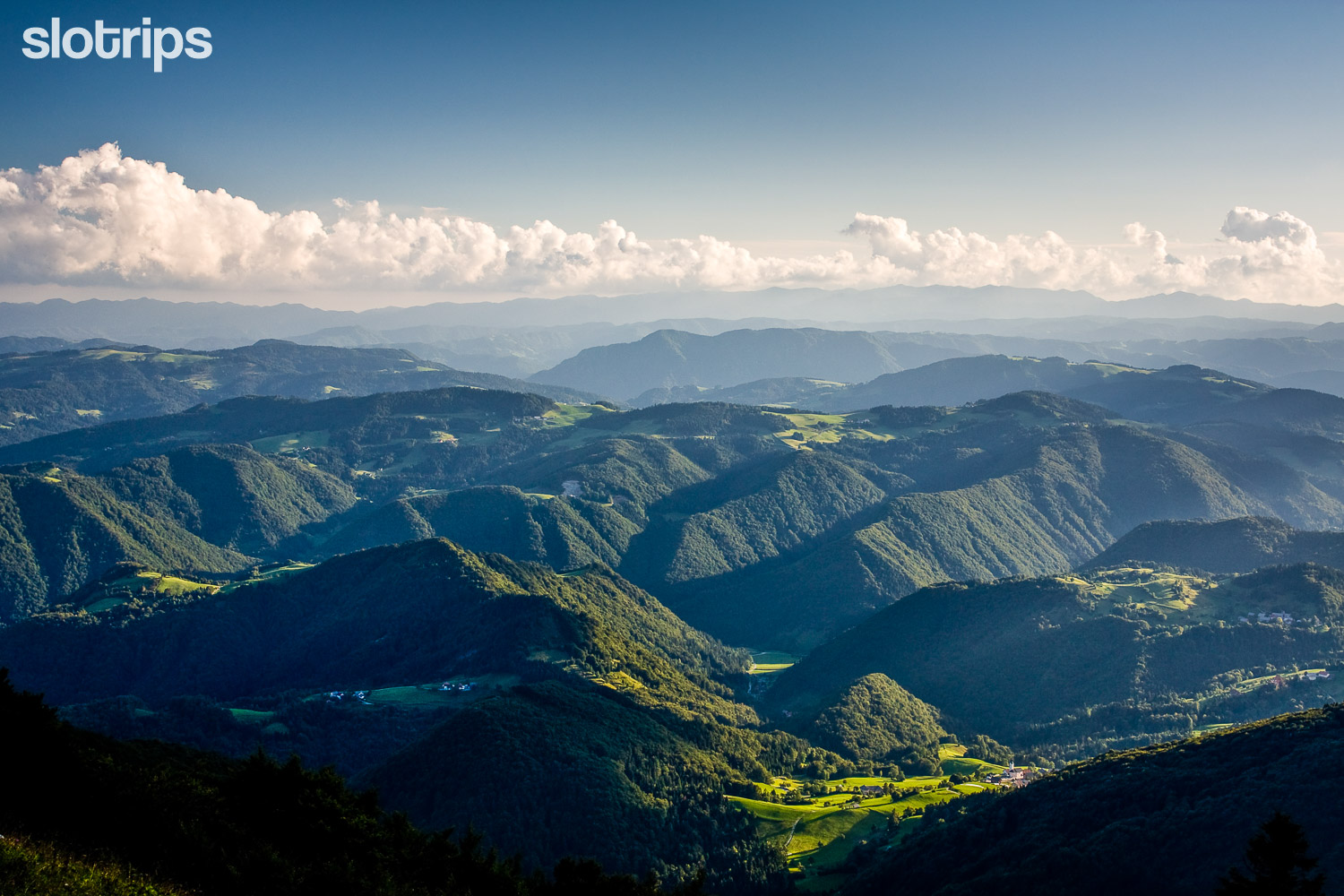
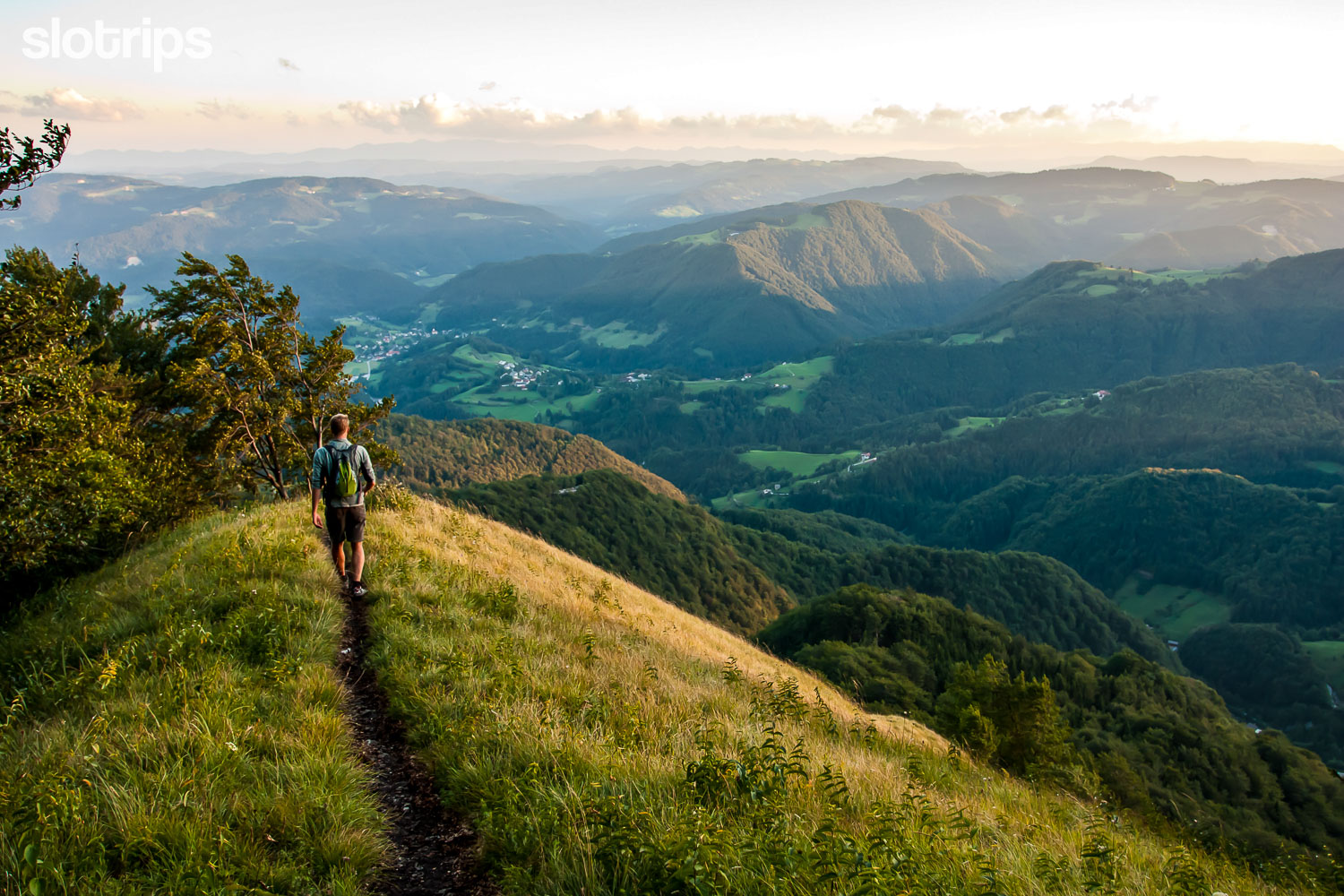
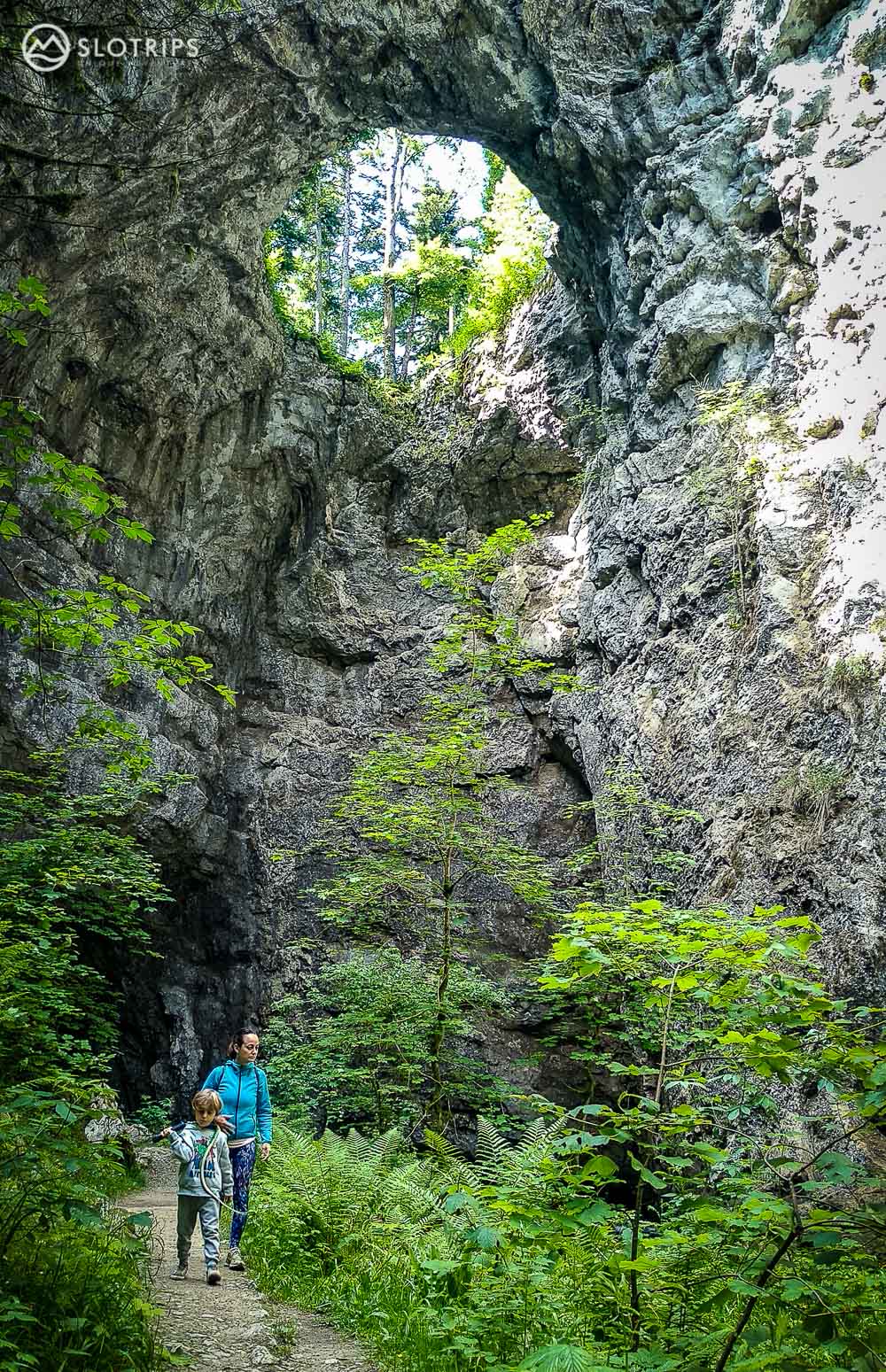
Hiking in Slovenia's Wine Regions
Who doesn’t like a nice hike through the vineyards, making pit-stops at local wine cellars, passing through tiny villages, and pampering your tastebuds with fabulous local cuisine? Again, Slovenia has a plan!
Slovenian wines might not be world-famous, but we promise you: You will be pleasantly surprised! Most of the wineries are small family-run properties, producing (and drinking) wine with love and pride for generations. The wines have very different characters because the families produce wine for themselves. The wine they like. And they’ll be happy to share it with you! Get ready for an exceptional hike, wine & dine journey!
Marked hiking trails and at least partly organized day hike possibilities are now offered by almost all Slovene wine-growing regions: the Karst, Vipava Valley, Goriška brda, Istria, Dolenjska, and Štajerska. We particularly like the region of Svečina on the Slovene-Austrian border, where the local tourist office has designed & marked five circular hiking routes.
For a week-long inn-to-inn hiking trip from the Alps to Slovenia’s finest wine regions try our self-guided hiking tour Alpine Heights & Coastal Delights. Why? With one word: Diversity!
Keep in mind: the hiking routes through the wine regions usually include several sections along local low-traffic asphalt or gravel roads.
How about the weather? Avoid summer and rather hike in spring or fall. Read more…
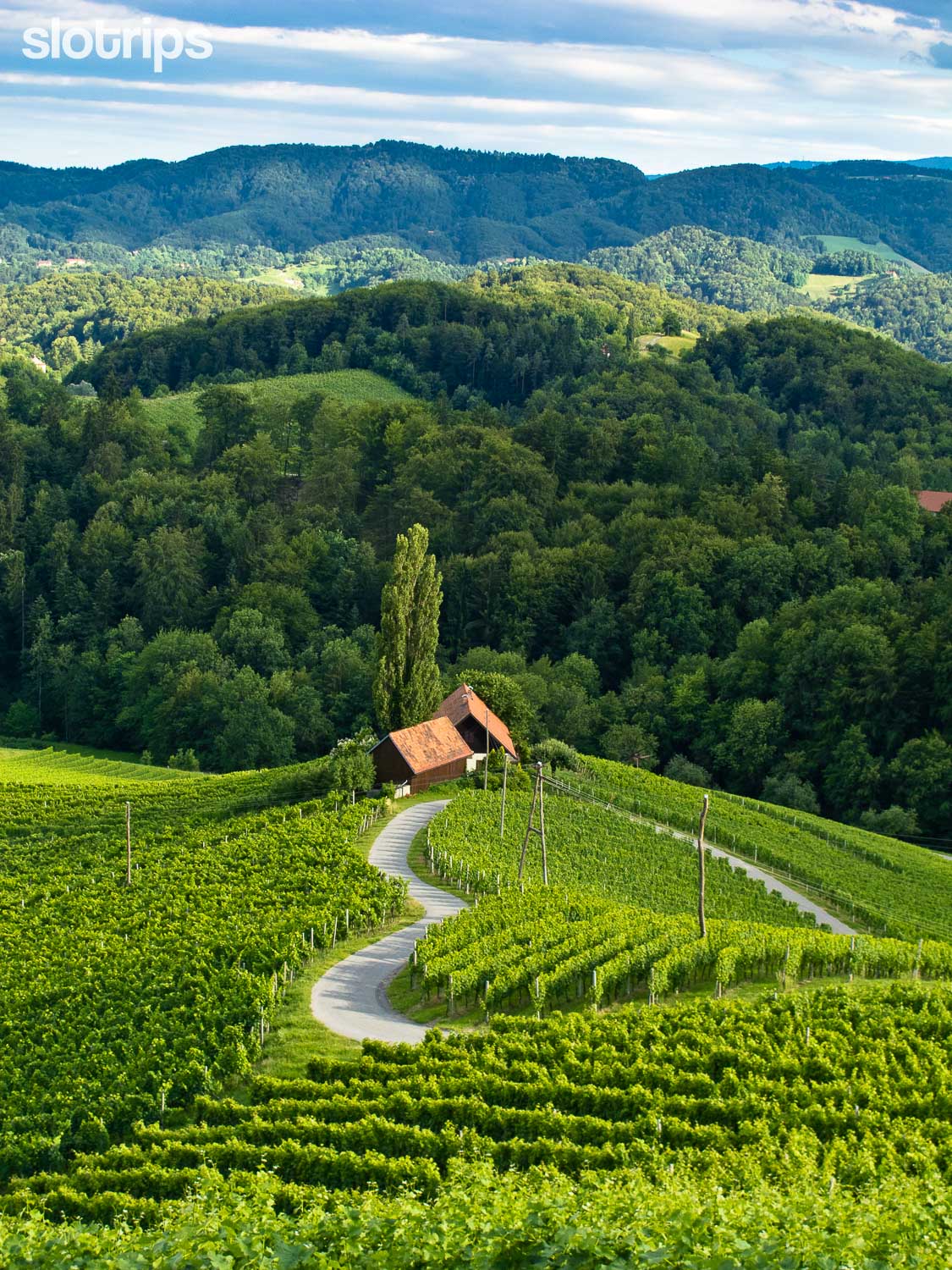
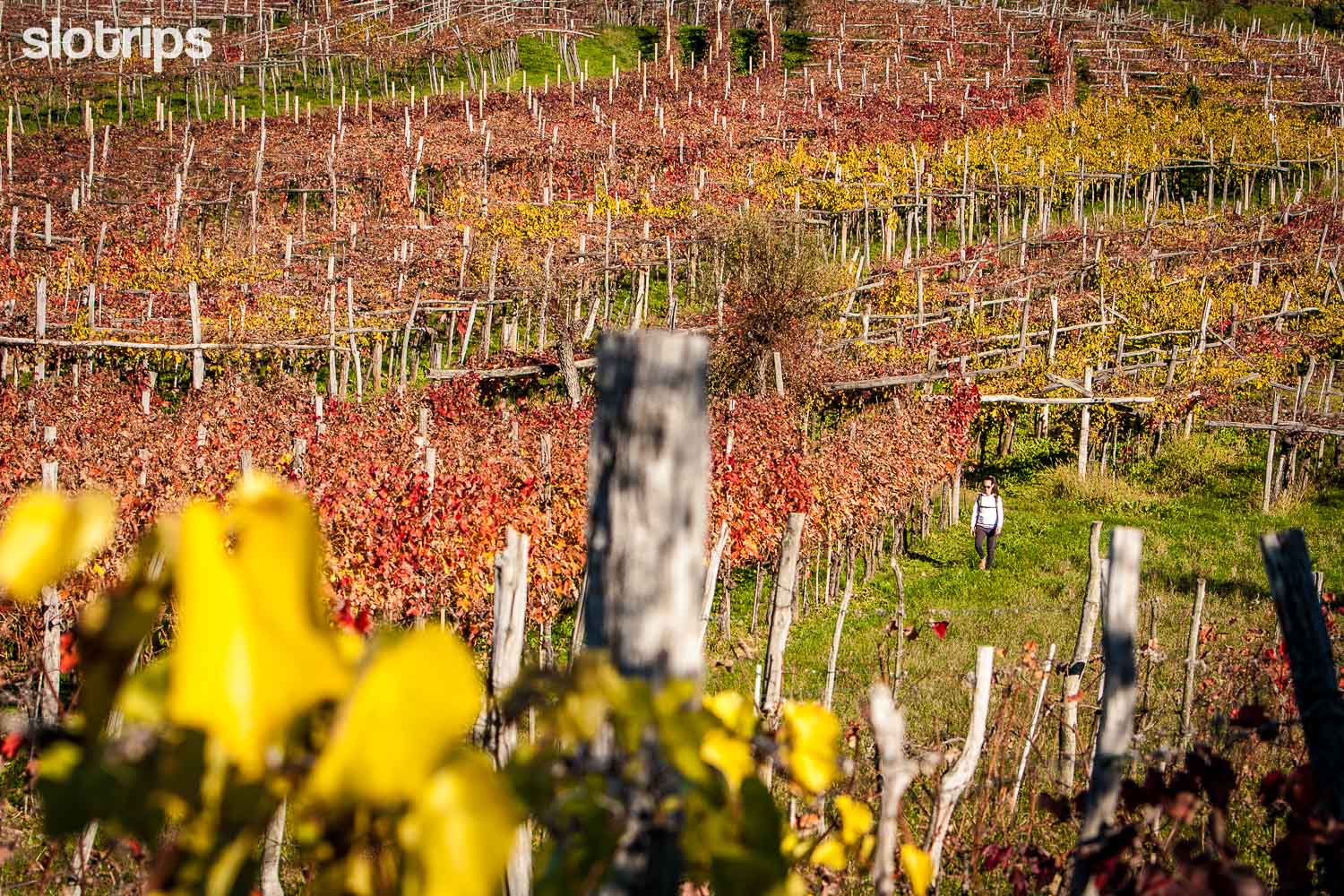
Multi-day stage hiking trails in Slovenia
Slovenes were the European pioneers of long-distance hiking trails. Already in 1953, we got the ambitious Slovene mountain trail. It connects the east of the country, via the sub-alpine hills and all three high mountain ranges with the Adriatic Sea. Since then, many new long-distance trails emerged and you can choose from demanding hut-to-hut high-alpine trekkings to comfortable inn-to-inn hiking journeys, allowing daily luggage transfer.
Most of us do not have the time to hike a 700km trail in 40 days. That’s why we have done the work for you and have chosen the best sections of these hiking trails and zipped them into 3 to 9-day hiking trips. Be it guided or self-guided. See suggestions below.
Slovene Mountain Trail
This 617km long-distance trail starts in Maribor and first ascends into the fresh, dark spruce forests of Pohorje. After ascending the first two-thousand-meter peak (Mt. Raduha, at the eastern end of the Kamnik-Savinja Alps) the real high-alpine hiking begins. The most difficult sections are in the Julian Alps. After that, you will mainly have a pleasant hike south towards the region of Karst and finally reach the Adriatic coast.
OUR SUGGESTIONS:
3-day guided: Best of Julian Alps Hut-to-Hut
4-day self-guided: Triglav National Park Adventure
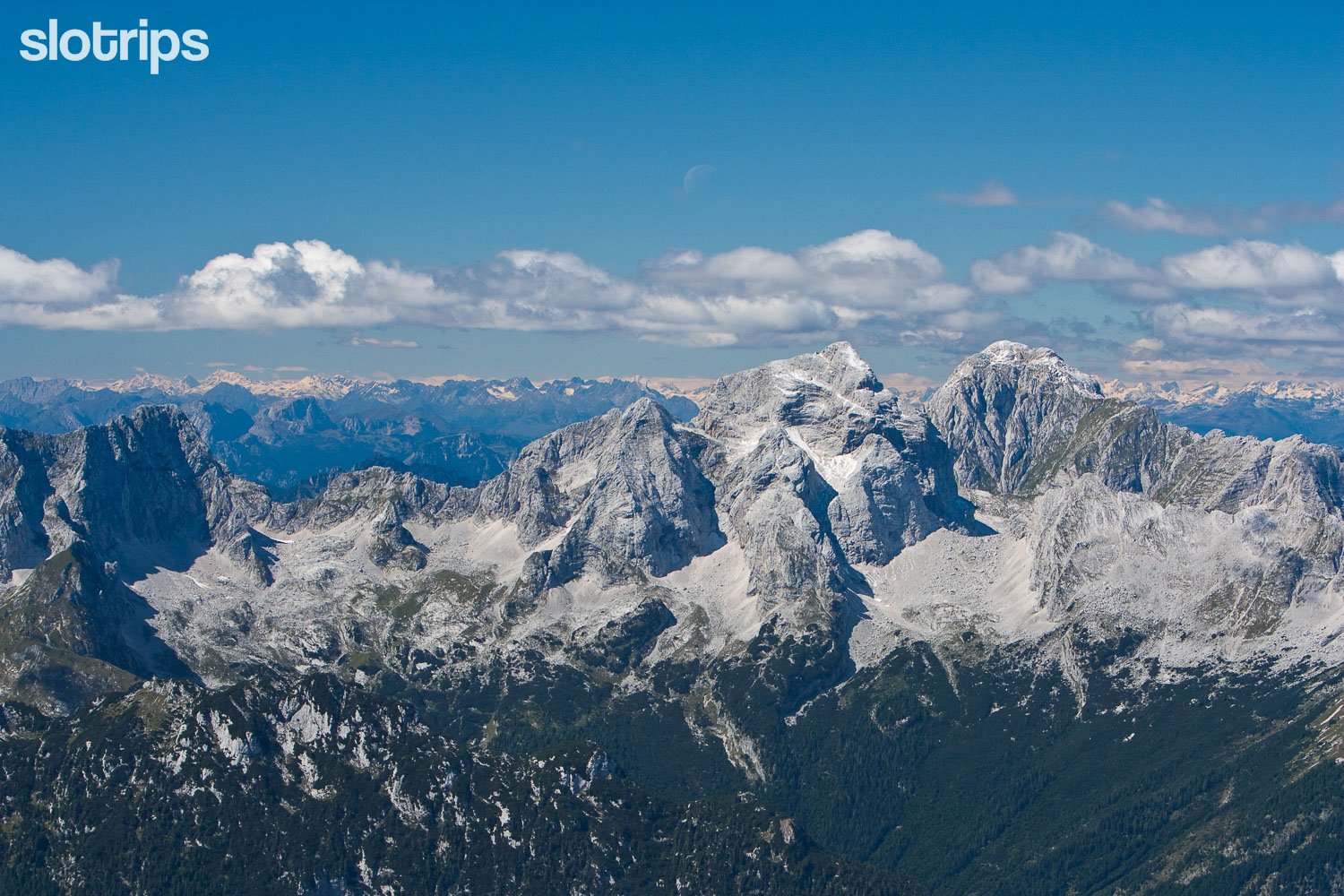
Alpe Adria Trail
This is our favorite long-distance trail. In the length of 750km it connects Austria, Slovenia, and Italy. Although it starts at the foot of the highest mountain in Austria and also crosses the Karawanks and the Julian Alps, it is not a high-alpine trail. It mostly follows stunning valleys and hills, offering amazing landscape changes. In Slovenia, you will hike across our highest road pass (Vršič) to the heavenly Soča Valley. Later it follows the history-ridden WWI paths and finally takes us to the wine-growing areas of Western Slovenia and Italy. It ends near the Italian town of Trieste at the Adriatic Sea.
OUR SUGGESTIONS:
3-day guided: Best of Alpe Adria Trail
4-day self-guided: Alpe Adria Trail Adventure
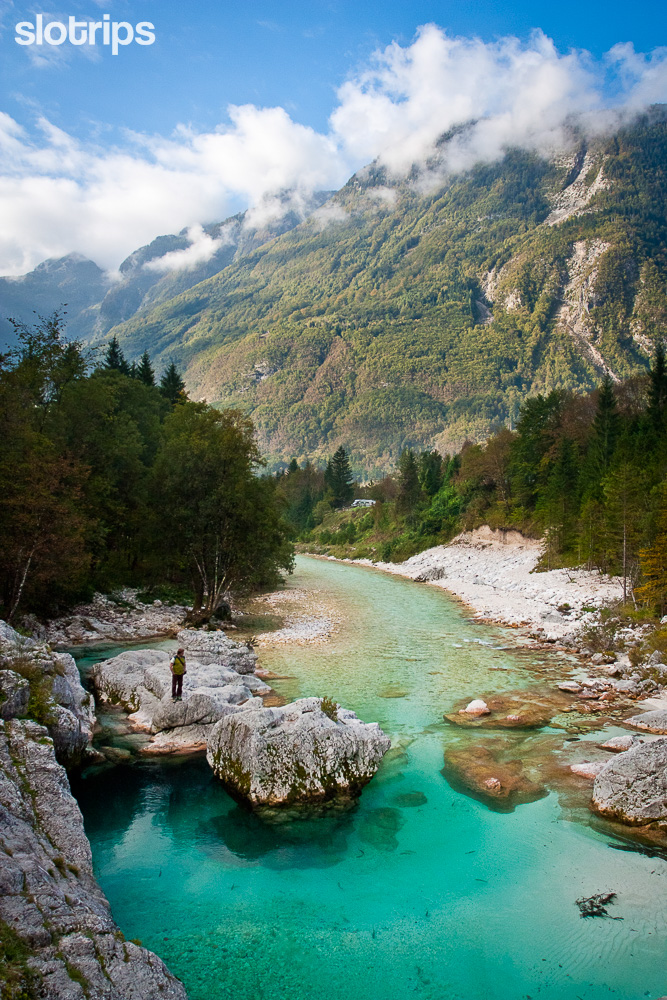
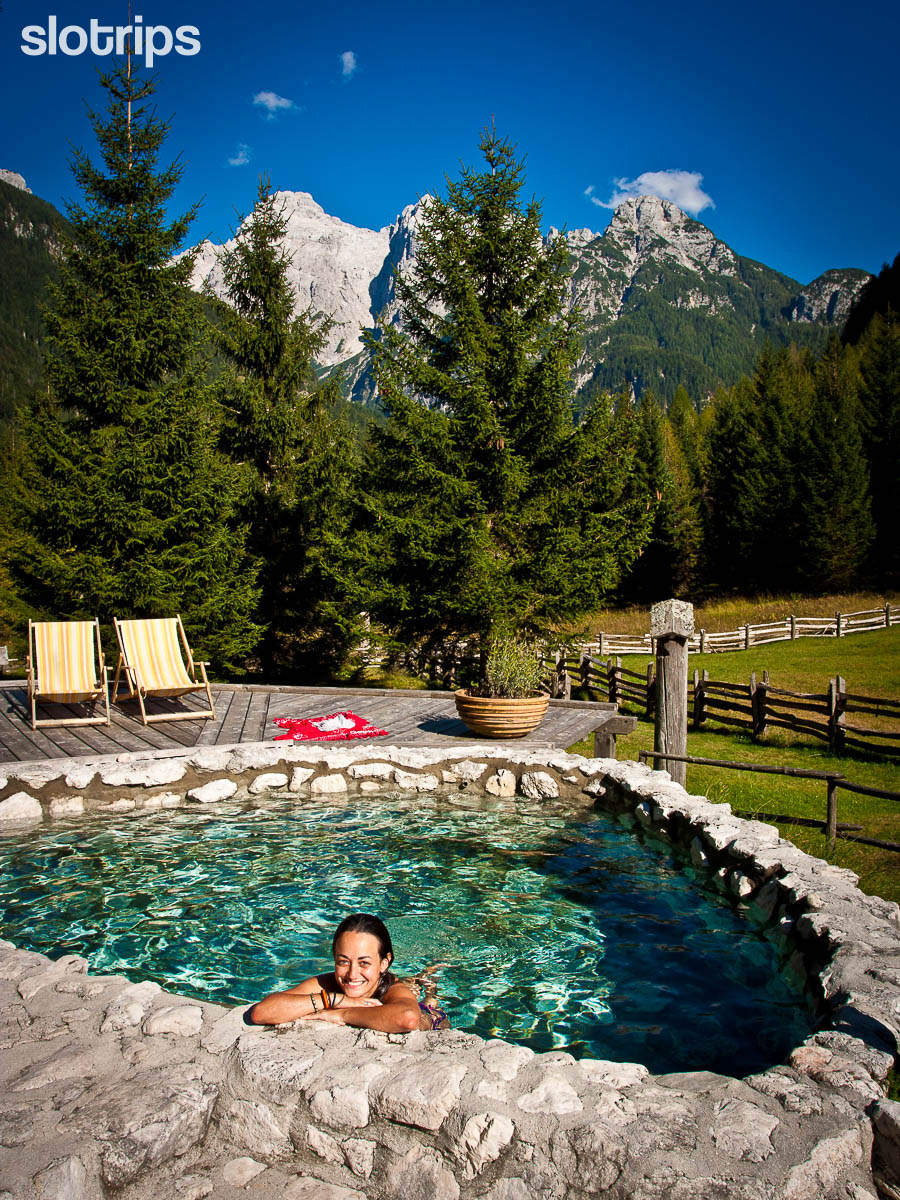
Via Dinarica
The entire long-distance trail runs in the northwest-southeast line through the karstic area of the Western Balkans, crossing 6 countries from Slovenia to Albania. It is more than 1,200 kilometers long, with a 160km Slovenian section. Via DInarica in Slovenia is beautifully wild, but expect also several sections on asphalt & gravel roads through extensive forests. Have a look at this beautiful video.
Juliana Trail
This is a circular long-distance route that takes you around the Triglav National Park or the entire eastern Julian Alps. As one of the most exciting newly opened long-distance hiking trails, it got a lot of international media exposure. Here is our honest first-hand opinion about it.
OUR SUGGESTION:
8-day self-guided: Best of Alpe-Adria & Juliana Trail
Other long-distance hiking routes
Let’s not forget the Walk of Peace (following the WWI Soča front), Via Alpina (international purple & red routes crossing the Alps), or the European hiking routes E6 & E7 crossing most of Slovenia’s subalpine hills.
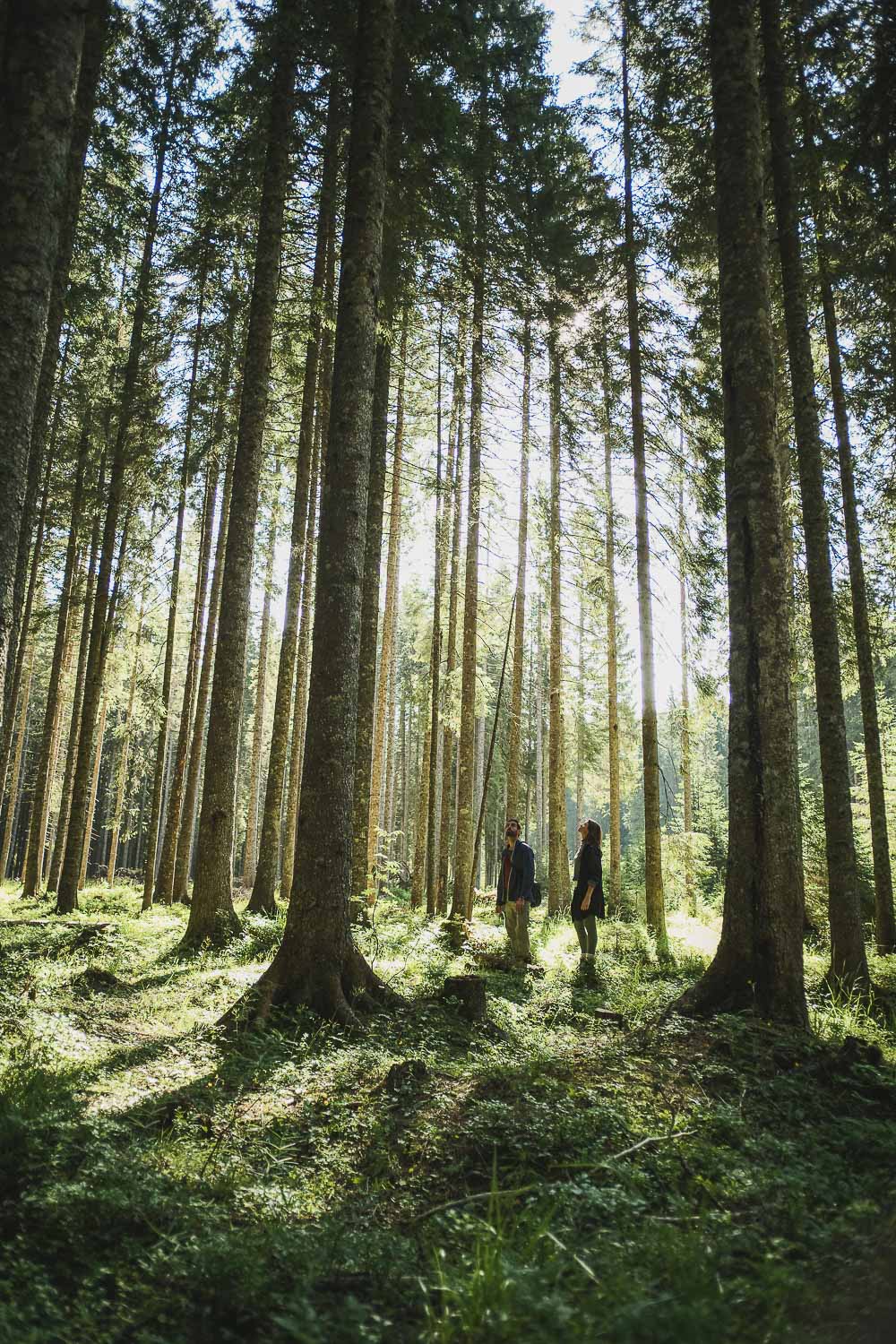
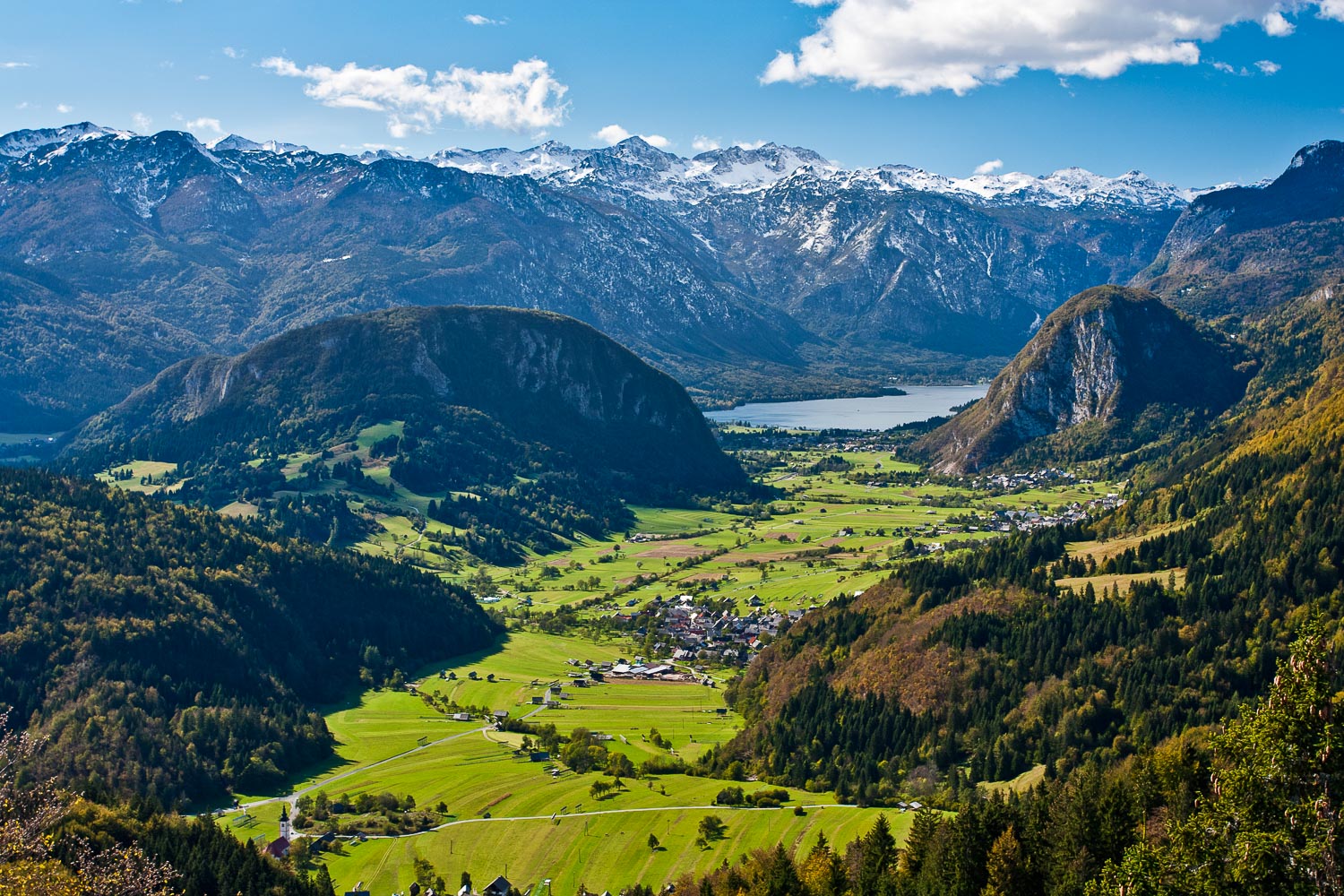
Day hikes or multi-day hikes?
Are you in for a point-to-point hiking journey with daily accommodation changes? Or do you prefer settling down in a comfortable hotel for a couple of days doing day trips from your base? When you think about this, you are really deciding how sincerely you are willing to leave your comfort zone on your hiking trip.
What does a hut-to-hut hike in Slovenia bring?
- An amazing hiking adventure away from it all!
- Immersion in the pristine high-alpine landscape you can only reach on a multi-day hike.
- Divine sunsets and sunrises.
- Connection with your fellow hikers sharing stories in the mountain huts.
- Basic overnight stays without showers. Sometimes only dormitories are available so get ready for some snoring.
- Limited variety and selection of food and beverages.
- No luggage transfer and heavier backpacks.
- Get some ideas for your hut-to-hut hike in Slovenian Alps.
When you are on a stage hike with a planned itinerary, you will have to go on a hike in (almost) any weather. This is also why such hikes are a test in many ways: of your endurance, mental strength, and physical fitness. But the feeling of achievement and fulfillment is also much stronger after several days of hiking.
A comfortable hiking trip
On the other hand, if you like the idea of a continuous hiking journey but still don’t want to leave the comfort of a hotel and your private bathroom, we definitely recommend the Alpe-Adria, the Juliana Trail, or our Alpine Heights & Coastal Delights walking tour.
On these trips, you won’t hike in absolute wilderness & “away from it all”. Even though you are walking beautiful trails in pure nature, you are never too far from civilization. If you feel tired and can’t make it through the stage or if it is raining cats and dogs, you can take a bus or a taxi to your next hotel.
You also won’t hike at high altitudes and won’t climb Slovenia’s highest peaks. Instead, you will marvel at their white limestone walls from mountain passes, you will follow beautiful valleys & rivers, cross dense forests, and stop in typical Slovenian villages.
We also love making these journeys multi-active and adding some cycling sections or stages wherever it makes sense.
Day hikes
Day hikes are a great option for everyone who doesn’t like constant packing and unpacking. You’ll have more time to relax, adapt to the weather uncertainties, and visit other local sights. But at least on some days, you will need a car or a driver-guide. For a week-long hiking trip in Slovenia, we recommend choosing two different regions. Our favorites are Lake Bohinj, the Logar Valley & the Soča Valley. Contact us for a customized hiking trip in Slovenia.
When to hike in Slovenia?
Our favorite months are May and June. It is warm, the days are long, nature is blooming, and it is still quite calm before the summer peak season kicks in.
However, if you are coming to Slovenia for a high alpine hut-to-hut hike, you will have to come between late June & September. That’s when most of the mountain huts are open and the snow has (mostly) melted.
For hiking in Slovenia’s wine regions, we recommend September, the time of harvest. October is another favorite with the change of colors all over the country & the golden larches in the Slovenian Alps.
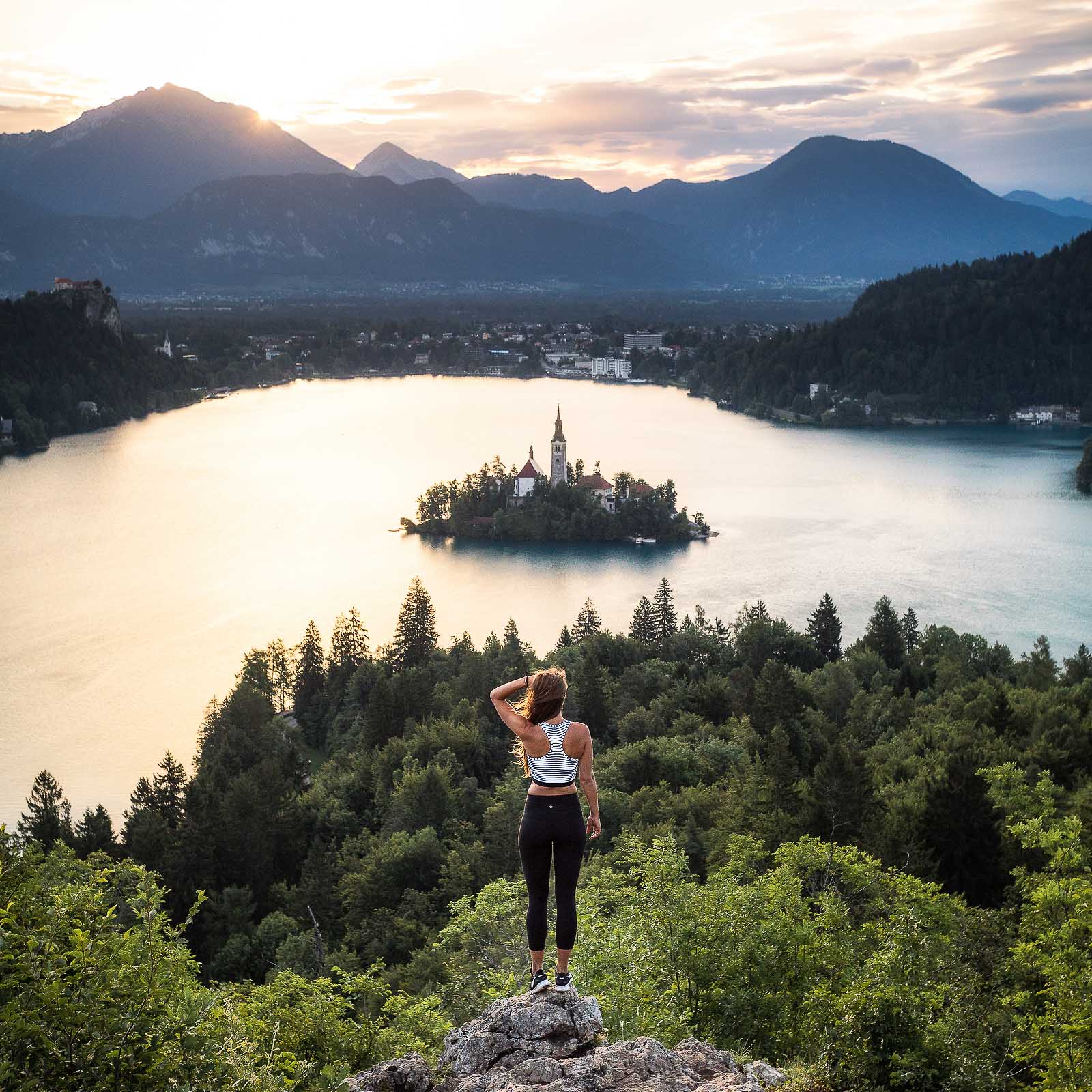
Flora & Fauna
Slovenes are traditionally closely connected with nature. We respect it and protect it! And we expect this from you as well. If you share the care of nature with us, you will surely enjoy it too!
In the mountains, for example, you might enjoy not even too shy looks of ibex, chamois, or a mouflon. A pair of eagles or marmots’ cheerful whistles. Maybe a close encounter with a snake, a snow hen, a wild rooster, a rabbit, or a roe deer. The latter is especially easy to see below the tree line, where there is no shortage of foxes and weasels.
In extensive forests of southern Slovenia lives a large population of brown bears. Individual specimens sometimes travel also north and west. But don’t worry – there have been no reports of foreign mountaineers meeting them for decades. The same goes for other big beasts. Your chances of winning a lottery are higher than your chances of meeting a wolf or a lynx in Slovenia.
In hotter summer months also expect insects. Not necessarily only the annoying ones, we also have about 3,600 species of butterflies.
The flower fields
When you hike through the country, you will quickly notice the two biggest features when it comes to vegetation. The first is definitely lush forests. Slovenia is the third most forested country in Europe. Another feature is the diversity of meadow and mountain flowers. If you are there at the right time (early summer) you will hike among carpets of various flowers, many of which are protected. Don’t pick them! Smell & enjoy them!
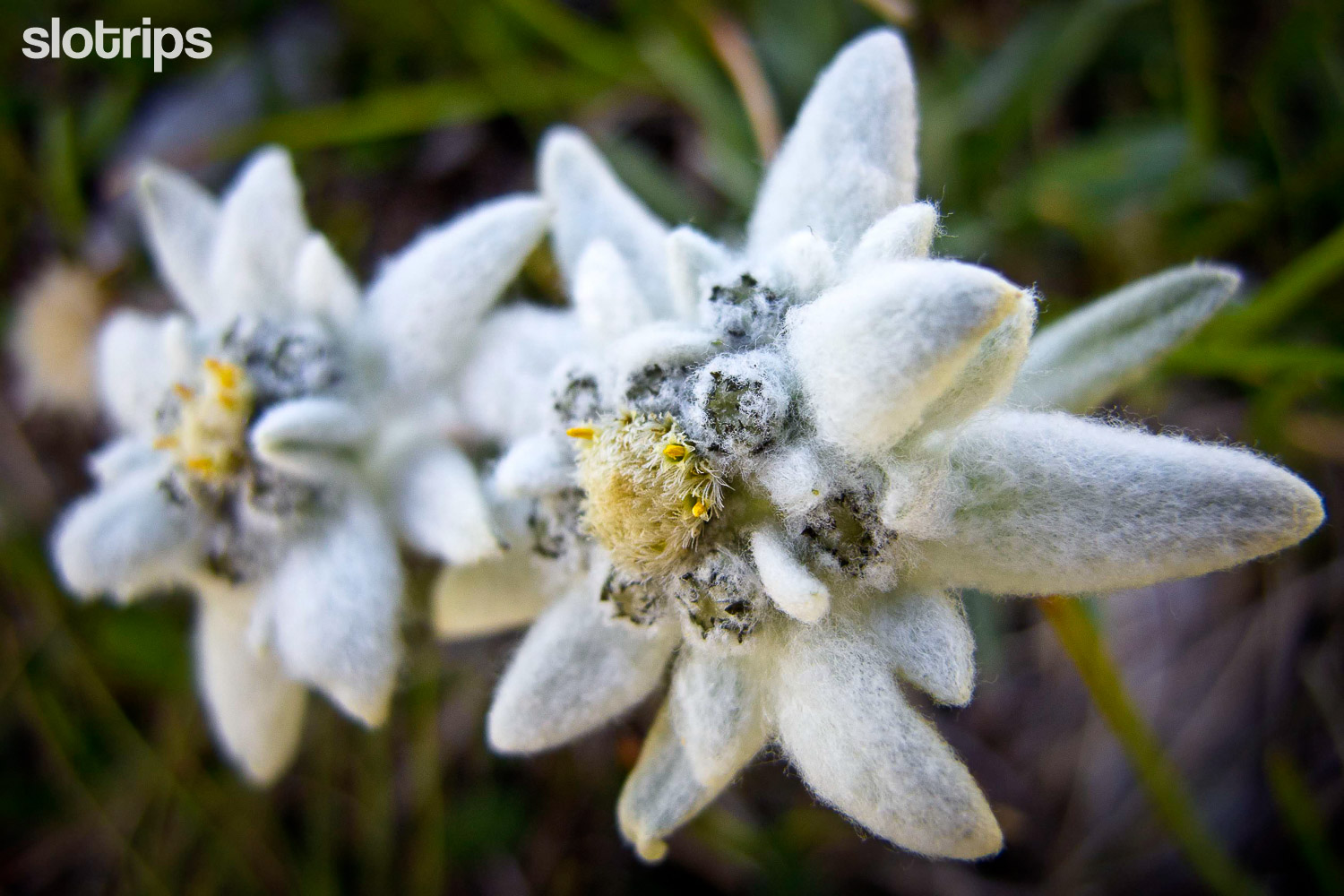
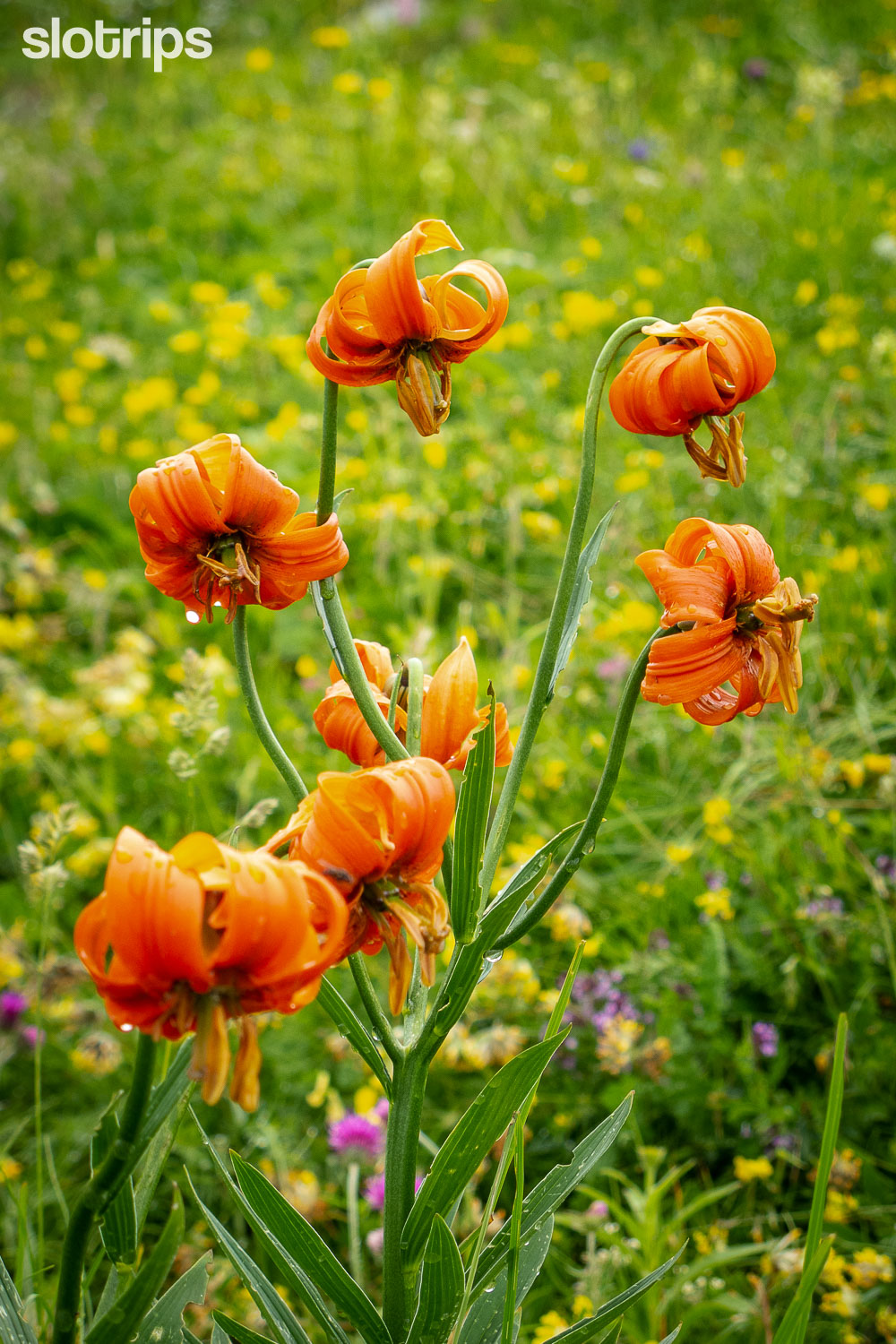
Safety
According to the Global Peace Report 2021, Slovenia is among the 10 safest countries in the world. Petty theft surely does occur and normal precaution is advised. There have also been occasional reports of car burglaries at some hiking trailheads. You should not leave things in a visible place in your car and your diamond rings should stay at home.
The real safety issues during your hike in Slovenia are possible injuries and weather conditions. You should be well prepared & equipped for the hike you are doing, especially on a hut-to-hut hiking trip. In the mountains, phone coverage is not always available and the weather can change quickly.
Even though the Slovene mountain rescue service is considered one of the best in Europe, don’t push your luck & stay on the safe side! Make sure to get yourself adequate insurance too.
Last but not least: ticks are common, and they can transmit tick-borne encephalitis & Lyme disease. No need to be paranoid but do apply tick repellant!
BEFORE YOU GO: check this website by Alpine Association of Slovenia.
Information & Maps
To hike in Slovenia, you will need a good map. Sidarta’s 1:25.000 hiking maps of Slovenia are the best and cover most of Slovenia’s high alpine terrain. On the other hand, the maps of the Alpine Association of Slovenia cover lots of other regions too.
Your favorite hiking app (AllTrails, Gaia GPS, OutdoorActive, etc.) surely has an abundance of different trails, tracks, and maps! They are definitely super useful – if you know how to use them and if your phone doesn’t run out of battery. We too, use a customizable navigation app for planning your self-guided hiking trips in Slovenia. It makes your navigation and orientation so much easier.
Slovenian local tourist offices are a great source of information about the region or their micro-location. When you are already on your way, or when in doubt, ask the locals for directions or advice. Slovenes are usually very willing to help a foreign guest and English is widely spoken. In the mountains, the hut keepers are also a very good source of information, and you can almost certainly buy a map of the area in the hut.
Here are some useful links:
- Slotrips.si – Our website with lots of ideas for day hikes all over Slovenia
- Hribi.net – the biggest “library” of do-it-yourself hiking trips
- The list of mountain huts, shelters, and bivouacs by the Alpine Association of Slovenia
- Information about closed and damaged trails by the Alpine Association of Slovenia
- Detailed weather forecasts, radar images of precipitation, webcams, and more by the Slovenian Environmental Agency.
Local Tips & Tricks
Knafelc waymark
When you buy a hiking map in Slovenia, you will see a spiderweb of red lines. These are the official hiking trails (by the Alpine Association of Slovenia) and most of them are nicely marked with our “Knafelc” waymark – red & white circle on the picture above. Besides the official hiking trails every region & municipality has developed local hiking trails, often marked with yellow signposts and numbers, corresponding with the local tourist maps.
Dober Dan!
On the trails in hills it is customary to greet the fellow hikers, even if we don’t know each other. “Dober dan” (good day), “živjo” (hello), “hvala” (thank you), or “prosim” (please) will take you a long way! As a small nation, we really appreciate it if a foreigner makes an effort and learns a couple of words. This small gesture will open doors for you and you will surely make new friends.
The Underfoot
The trails in Slovenian mountains are rocky. They can be narrow, steep, you can expect loose gravel, slippery roots, or tree leaves. The hiking poles help, so consider taking them with you. Also, don’t forget sturdy & comfortable hiking shoes with good grip. How about flip-flops? Not for the trails, but you might find them handy to rest your feet at the end of the day and use them in & around the hut on your multi-stage hike.
Water
Water in Slovenia is abundant and of the highest quality. You can drink tap water all over Slovenia, but we do recommend some caution when drinking from an open stream during your hikes. If you see a water source or a water trough, it is most probably safe to drink. However, if you would like to stay on the safe side, bring your favorite water filter (we love Grayl) and you will never buy bottled water again! Say no to single-use plastic!
Keep in mind: hut-to-hut hikes are a different story. There is very little surface water in the high-alpine areas and you will probably have to buy bottled water every now or then at the mountain huts.
Food
Slovenian food is amazing! In many places, you will get delicious farm-to-fork dishes, prepared with love and secrets of our grandmas’ recipes. The food in the mountain huts is mostly traditional, with dishes “on spoon” (= stews), as we say it. However, in most of the huts that are not accessible by car, do not expect any culinary highlights. After a couple of days in the huts, you will be happy to have a proper “restaurant meal”.
Hiking Slovenia Responsibly
A big part of the Slovene mountain territory is protected. Either as a part of the Triglav National Park or of Natura 2000 (the European network of special protected areas), or as a local landscape park. You will be hiking in a clean country! Also in larger cities, even more so in the mountains. Make sure it stays that way. The rule in huts has always been that whatever you bring with you, you also take back to the valley.
We guard our trails, we guard our waters, we guard our flora and fauna. To keep the nature intact, you will hear many “don’ts”: don’t walk outside the trails, don’t pick the flowers, don’t upset the animals, don’t fly your drones, don’t swim in the high alpine lakes, don’t wild camp and do respect private property.
Respect the house rules in the huts, their caretakers and the crew. Embark on trails you can handle mentally and physically. Always take enough fluids and energy snacks with us.
Enjoy it!


